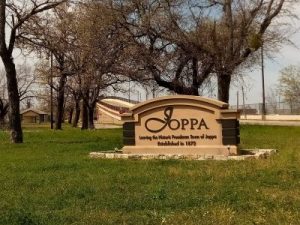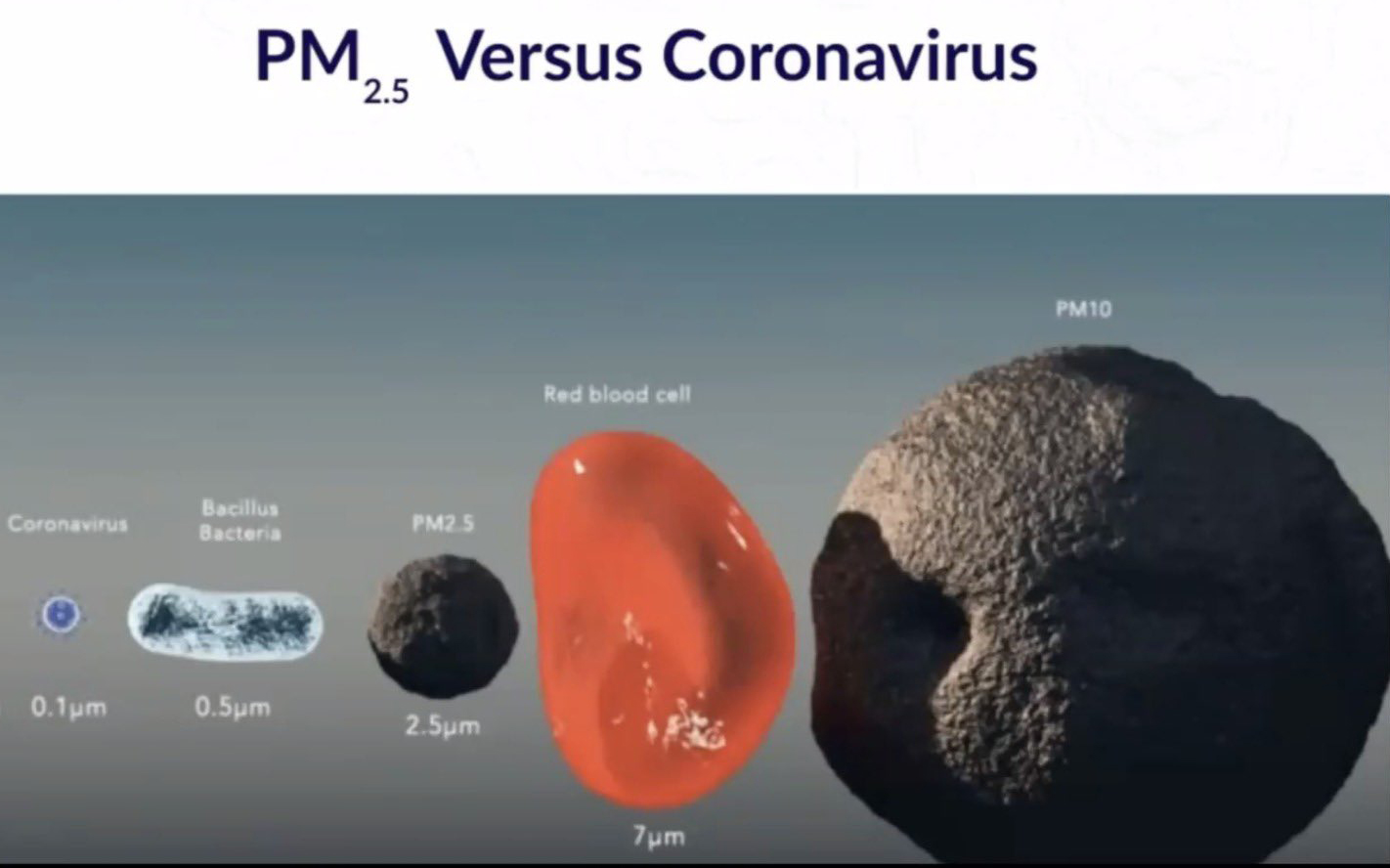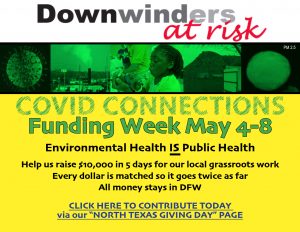Air quality monitoring
Stay Inside. Plant Trees. An Annotated Guide to City of Dallas Air Quality Monitoring
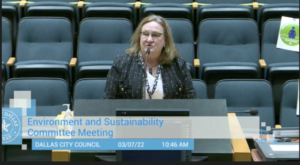
Over the last couple of weeks, the staff responsible for the Air Quality Department at Dallas City Hall’s Office of Environmental Quality have been making the rounds giving presentations about their official air quality monitoring efforts. You can find their complete PowerPoints here as PDFs on the agenda: https://cityofdallas.legistar.com/MeetingDetail.aspx?ID=903849&GUID=B69AEEB6-D5DA-4AE2-B8A4-5BB13C3FD4BE&Options=info|&Search=
The presentations are divided into two parts. The first deals with the monitors placed in Dallas as part of the State and federal enforcement to monitor DFW’s status as a “non-attainment area” for ozone, or smog. The second is about the “non-regulatory” (i.e not EPA-certified) air monitoring staff has been doing that has up to now has been going on under the “Breathe Easy” banner with a fleet of 12 monitors due to expire this year.
New federal grants have made it possible for the City to buy 35 new “non-regulatory” air monitors of various sizes and capabilities that are aimed at “community monitoring.” By the terms of the grants, five of these have to be placed in two West Dallas zip codes. The other 30 include six larger, more sophisticated air monitors that also come with their own metrological towers and will be placed at the City’s discretion.
This is quite an upgrade for a Department that only a short time ago was dismissing the idea of community monitoring and is in their fourth year of rejecting Joppa residents’ pleas for an air monitor in their neighborhood. That’s the good news.
What’s unclear is how all this new monitoring capability will be used to move the needle of air pollution exposure in Dallas.
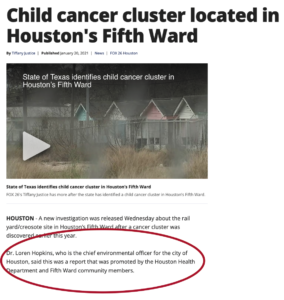
Houston has a staff toxicologist that identifies AND advocates for environmental health. Why doesn’t Dallas?
Is the City collecting air quality data so residents can brace themselves on “bad air days”, or are they collecting it to shape City Hall policy that could reduce air pollution and its impacts?
When the goals of all this City air monitoring come up in the new presentations, there’s no mention mention of impacting Dallas City Hall policy. Instead, there are boasts about gathering ““high quality data,” “contributing to local and regional databases,” and “better understanding the performance of low cost sensors” for “public health measures” and “understanding the role air pollution may play in pediatric asthma” (Really? there’s lots of studies already proving this link)
No suggestion for any pro-active City policy to reduce air pollution. No talking point about using the data to address environmental racism or increase City Hall’s much-valued “Equity” in air quality. There’s a lot of emphasis on collecting data but not much attention paid at all to what will be done with that data.
During the Question and Answer session that followed the presentations in front of the Dallas City Council’s Environmental Committee, staff suggested the results of the monitoring could be used to further the City’s air quality goals like…..staying indoors when pollution is bad, and planting trees to mitigate it. Honest.
Dallas City Council Member Jaynie Schultz:
“What are we going to do to reduce air pollution as a result of this data, this incredible trove of information we’re gathering? ….Will you be proposing to Council different things we can do to reduce that asthma so we can actually affect those numbers?
Office of Environmental Quality and Sustainability Assistant Director Susan Alvarez:
“We are currently working with our Office of Data Analytics to get that data added to the big data website so it will be publicly available. This is one piece of our grant for the West Dallas project; is to also develop appropriate messaging and to work with a non-profit on that to get that message into some of those schools where we have higher than average pediatric asthma rates….
CM Schutlz: But what’s the message? I’m sorry to interrupt.
Alvarez: The message is related to how to, um, best avoid, um, outside, outdoor activities. The other thing that we’re doing is working with the Texas Trees Foundation on, ah, piloting some interventions using nature based solutions, AKA, trees, and they’re working on that right now. They’re already working on planting vegetative screens”
It’s these kind of circa-1990’s answers that reveal why modern public health expertise is so needed at OEQS and City Hall. And not just included in the mix, buy actually driving City Hall environmental thinking. Data collection without application to policy is the Status Quo.
No OEQS staff holds a public health degree, has done research on the public health effects of air pollution, or is charged with evaluating air pollution levels from a public health perspective. When very high levels of air pollution are picked up by any of these new monitors, OEQS won’t have anyone on staff who’ll have the expertise to tell residents what that means.
Instead, the City will still be making residents do all the heavy lifting of solving problems the City helped create. You’re not only assigning them the task of linking pollution levels to impacts but also making it their responsibility to come up with the answer to cutting that linkage. This is what happened at Shingle Mountain. This is what’s happening in Joppa. This is what’s happening in West Dallas. Despite a fleet of new monitors, the City’s stance seems to be that we’re just collecting the numbers. What people do with them isn’t up to us.
Imagine that being the City’s response to finding levels of toxins in tap water faucets in Dallas neighborhoods. City Hall wouldn’t just publish the information in hopes of residents avoiding drinking the water. City Hall would take action to provide fresh water and eliminate the harm. But for some reason the City feels under no obligation to address toxic air quality in homes the same way.
There are a total of 20 slides in the two presentations. Here’s a brief annotated guide to the four slides that provide the crux of the City’s information:
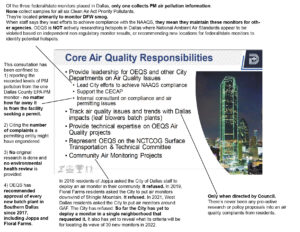
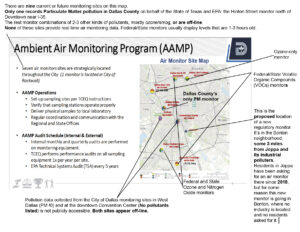
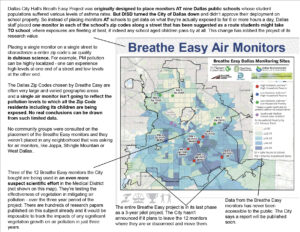
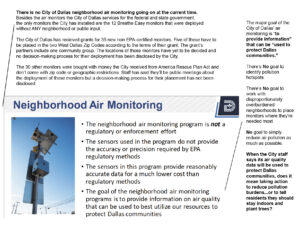
The City of Dallas’ approach to air pollution in its city limits is reminiscent of the old Community Organizing story about the village that finds abandoned babies floating downstream along its river banks and decides to organize to do something about it. At first there’s only a few, but after a couple of weeks there’s hundreds. Adoption bureaucracies are established. Seal Teams of Baby rescuers are on call 24/7. Special baby dams are built.
Until one day some smartass villager asks: “Why don’t we go upstream to see why the babies are ending up in the river?”
Dallas is always responding after the fact to air pollution problems in a downstream way when residents want them to go upstream and solve the real problems. Problems its often responsible for creating in the first place.
Instrumentation without context and action is pointless. “Neighborhood monitoring” without neighborhood oversight is worthless.
If the City of Dallas wants to maximize the potential of so many new air monitors, it needs real public health expertise to tell residents not just to avoid the danger, but how the danger can be eliminated. And neighborhoods must be driving its monitoring deployment process, not just informed after the fact or consulted on a token basis.
But right now there’s absolutely no process in place at Dallas City Hall to ensure either.
One of Dallas’ Biggest Polluters Appears to Be Breaking the Law in West Dallas
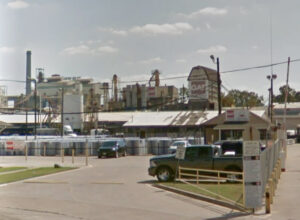 FOR IMMEDIATE RELEASE : 8 am Wednesday July 21
FOR IMMEDIATE RELEASE : 8 am Wednesday July 21
Contact: Raul Reyes Jr.: President, West Dallas 1 – 469-880-3811
Evelyn Mayo, Neighborhood Self-Defense Project – 774-810-0849
“GAF is the new RSR.”
Alliance Says West Dallas Polluter is Operating Illegally and Poisoning Residents…Just Like Infamous Lead Smelter. And They Want it Gone.
Giant shingle factory doesn’t have needed permits from City; Monitors show its likely violating federal air pollution standards too
(Dallas)– In a stunning replay of West Dallas environmental justice history, a new alliance of
groups says the largest polluter in West Dallas lacks required City of Dallas documents to operate, and could be in potential violation of federal air pollution standards. It’s the same circumstances that forced the former RSR lead smelter, once also located on Singleton Boulevard, to close in the 1980’s.
“GAF is the new RSR” said Raul Reyes, President of neighborhood group West Dallas 1, and spokesperson for the new coalition of allies, “This factory is operating illegally, lacks basic pollution controls, and is too dirty to be doing business in West Dallas neighborhoods. And just like RSR, it should be closed.”
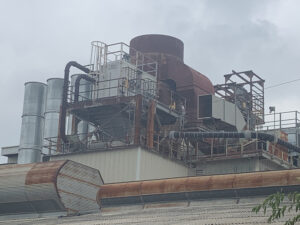 GAF has operated its West Dallas asphalt shingle factory for so long a lot of its pollution is “grandfathered” – unfiltered by any modern controls like “scrubbers” despite that technology being capable of removing up to 99% of sulphur dioxide emissions. In the last EPA inventory available from 2019, it was listed as Dallas County’s third largest air polluter with over 260 tons being spewed from GAF into surrounding neighborhoods that year alone. That includes 125 tons of Sulfur Dioxide pollution – more than any other facility in Dallas.
GAF has operated its West Dallas asphalt shingle factory for so long a lot of its pollution is “grandfathered” – unfiltered by any modern controls like “scrubbers” despite that technology being capable of removing up to 99% of sulphur dioxide emissions. In the last EPA inventory available from 2019, it was listed as Dallas County’s third largest air polluter with over 260 tons being spewed from GAF into surrounding neighborhoods that year alone. That includes 125 tons of Sulfur Dioxide pollution – more than any other facility in Dallas.
For years, surrounding residents and workers have reported sulfur-like rotten egg odors in the Singleton corridor around GAF, leaving them with headaches and nausea. But it’s the tiny pieces of soot being emitted from the facility that could get the company in trouble with the EPA. Using off-the-shelf Purple Air monitors for Particulate Matter, West Dallas residents independently monitored PM pollution around the GAF plant over the past two years. Results show levels of air pollution that likely violate both the 24-hour and annual national standards for PM 2.5 microns or smaller. If official EPA monitoring confirms the violations, the part of West Dallas around GAF, which hosts many other industrial polluters that are likely contributing to this pollution, could be declared a “non-attainment area” for PM pollution. GAF and other West Dallas PM polluters would have to submit a plan to decrease their emissions and new industries would be subject to stricter limits. RSR was also violating air pollution standards when the City of Dallas began to seek its closure in the late 1970’s.
Just like lead scientists believe there’s no “safe level” of exposure to PM pollution. A violation of its national ambient air standard is a dangerous condition that can leave lasting health harm among the hundreds of residents who live next to GAF, especially children.
Reviewing the results from the GAF monitoring, Dr. Natalie Johnson, a faculty member of Texas A&M’s School of 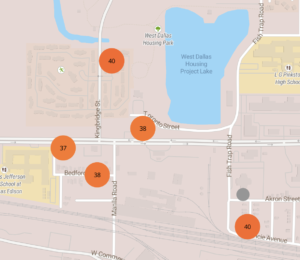 Public Health specializing in respiratory toxicology and environmental health warned, “If verified by EPA, these numbers are concerning. Exposure to levels over the EPA regulatory limits can lead to chronic diseases, such as heart disease, stroke, and premature death. The immune system, reproductive system, and developmental functions can also be harmed. The elderly, children, and infants are particularly vulnerable.”
Public Health specializing in respiratory toxicology and environmental health warned, “If verified by EPA, these numbers are concerning. Exposure to levels over the EPA regulatory limits can lead to chronic diseases, such as heart disease, stroke, and premature death. The immune system, reproductive system, and developmental functions can also be harmed. The elderly, children, and infants are particularly vulnerable.”
Janie Cisneros, who lives with her family just feet from GAF’s fence line and hosted one of the monitors said “I grew up on Bedford Street and GAF was always a big presence. Now that I moved back to raise my own family, I see how disgusting and unhealthy the air is. It often keeps me from playing with my daughter outside.”
This is the first time in Texas that new low-cost hyperlocal air monitoring by residents has revealed potential violations of a national air pollution standard. Despite years of complaints, there are no City of Dallas, State, or EPA monitors near GAF.
At the same moment GAF is being accused of creating hazardous levels of air pollution, a research of City Hall documents by staffers for the Southern Dallas Neighborhood Self Defense Project revealed that GAF doesn’t have a current Certificate of Occupancy or the Special Use Permit (SUP) from the City of Dallas it needs to be operating at the site.
The RSR smelter also never operated with the SUP it was required to obtain. More recently, the six-story dumping ground for the asphalt shingles that GAF and others produce, that became Shingle Mountain in Southern Dallas, was illegal from the first day it operated because it also lacked a required SUP and Certificate of Occupancy.
Armed with this new information, West Dallas residents notified the City of Dallas about GAF’s illegal status. WD1 representatives have been told the research is correct and the City is now investigating. Without the Special Use Permit, GAF’s shingle-making is a “non-conforming” use and the City could initiate the same proceedings it used to eventually close RSR.
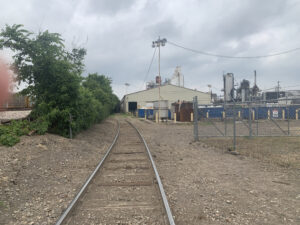 This dramatic news about GAF’s legal status and pollution levels comes precisely at the moment the company is applying for a renewal of its “Title V” operating permit from the State and EPA. Usually a mundane regulatory rubber-stamping, this process now has the potential to substantially add to the company’s headaches.
This dramatic news about GAF’s legal status and pollution levels comes precisely at the moment the company is applying for a renewal of its “Title V” operating permit from the State and EPA. Usually a mundane regulatory rubber-stamping, this process now has the potential to substantially add to the company’s headaches.
After months of requests by West Dallas 1 and elected officials, the Texas Commission on Environmental Quality (TCEQ) will be holding a virtual public hearing on the permit on July 29th at 7 pm.
Residents and others who want to ask questions or provide comments during the hearing may access the webcast by following this link:
https://www.gotomeeting.com/webinar/join-webinar
and entering 192-616-739 along with your email address or may call (512) 239-1201 at least one
day prior to the hearing for assistance in accessing the hearing and participating telephonically.
Members of the public who wish to only listen to the hearing may call, toll free, (415) 655-0060 and enter access code 569-744-316.TCEQ staff is recommending that you join and register at least 15 minutes before the hearing begins. A copy of the permit application can be viewed at the Dallas West Branch Library (2332 Singleton Boulevard). General complaints can be submitted in writing up to the hearing date to the TCEQ here:
https://www.tceq.texas.gov/assets/public/compliance/monops/complaints/complaints.html and objections to the permit renewal can be submitted here: http://www14.tceq.texas.gov/epic/eComment/.
Besides WD1, the groups lining-up to oppose the federal permit renewal are a combination of Dallas environmentalists, neighborhood associations, and social justice organizations, including Dallas Sierra Club, Downwinders at Risk, Public Citizen, and Southern Sector Rising.
After a review by TCEQ GAF’s permit renewal then heads to the Biden Administration’s EPA, which has pledged to work with communities of Color to reverse the kind of environmental racism the groups claim GAF is guilty of practicing.
“No permits. The wrong zoning. Dangerous levels of air pollution. Right in the middle of Black and Brown neighborhoods. Tell me how this ISN’T a repeat of the environmental racism West Dallas has been fighting for decades,” said Reyes. “We expect the Biden Administration to make good on its promise to end this kind of unacceptable discrimination.”
Robert Wood Johnson Foundation awards grant to Texas A&M and Downwinders at Risk for Joppa Environmental Health Project
Monies will fund unprecedented study of link between health and air pollution in Dallas Freedman’s Town; first effort of its kind in Texas
What’s believed to be the single largest environmental health research investment in a Texas neighborhood was awarded today by the Robert Wood Johnson Foundation to examine the links between human health and air pollution in the Joppa community of Dallas.
 Texas A&M and Downwinders at Risk’s Joppa Environmental Health Project was selected as one of only 16 national proposals funded by the Foundation’s Interdisciplinary Research Leaders grant. Between now and 2022, over $350,000 will be spent by Texas A&M scientists trying to understand the correlation between Particulate Matter air pollution and the health of the Freedman’s Town’s residents.
Texas A&M and Downwinders at Risk’s Joppa Environmental Health Project was selected as one of only 16 national proposals funded by the Foundation’s Interdisciplinary Research Leaders grant. Between now and 2022, over $350,000 will be spent by Texas A&M scientists trying to understand the correlation between Particulate Matter air pollution and the health of the Freedman’s Town’s residents.
Cecilia Wagonner, a member of the Joppa church that hosted a community meeting on air pollution monitoring last December, was enthusiastic about the news. “I want to know the truth and nothing but the truth about air quality in our historic neighborhood. This is definitely good news. Let environmental justice be served.”
Per capita, Joppa is the most polluted neighborhood in Dallas. On one side is the Trinity River. On the other three sides are an asphalt batch plant, Railroad switch yard, large asphalt shingle factory, a concrete batch plant, and Interstate highway. It’s directly downwind from the largest methane air p olluter in Dallas – the City’s McCommas Landfill methane energy recovery unit.
olluter in Dallas – the City’s McCommas Landfill methane energy recovery unit.
Since PM air pollution monitoring began there on August 31st as part of the new SharedAirDFW air monitoring network, Joppa’s PM levels have averaged significantly higher than other sites.
Two Texas A&M scientists based in College Station will lead the new Project. Dr. Natalie Johnson, is an A&M toxicologist specializing in the health effects of Particulate Matter air pollution, and Dr. Ping Ma, is an A&M behavioral and social science researcher who previously worked at Dallas Children’s Hospital specializing in health disparities and social determiners of health. Downwinders will assist with community canvassing and outreach efforts as well as provide technical support through its 11-Joppa based SharedAirDFW network monitors.
They’re now all charged with collecting evidence to discover whether Joppa has higher rates of PM air pollution and health problems than other communities, and understand how differences in daily levels of PM affect residents’ health.
“PM represents a significant ‘unseen’ health risk related to cardiovascular disease, chronic respiratory disease, including lung cancer and asthma, as well as effects on infant development and brain health,” said Johnson. “SharedAirDFW’s real-time pollution monitors will help make this threat ‘seen.”
Ping pointed out the study will be the first academic-community collaboration of its type in Texas. “Our findings will facilitate understanding of the air pollution risks Joppa residents face as well as generate community-based solutions to help create a new culture of environmental health in Joppa.”
Participa nts chosen for the IRL process also become students who receive training in the latest research methods and constant feedback from panels of experienced scientists and experts.
nts chosen for the IRL process also become students who receive training in the latest research methods and constant feedback from panels of experienced scientists and experts.
Grant monies will pay for staff time, graduate assistants, technology, travel, and community outreach over a three-year period.

The IRL grant is the first research project attracted by the SharedAirDFW regional air monitoring network that debuted in September, but Jim Schermbeck, Director of Downwinders, predicted it wouldn’t be the last. “This network makes all kinds of new comparisons and studies possible. In this case, residents and researchers are using it to document Joppa’s air pollution burdens and assist residents in relieving those burdens. That’s a first for Dallas, and Texas.”
From now until the end of the year the Project partners will be assembling their local contacts, refining their timeline and methodology, and getting ready to begin research in early 2021.
A Citizen’s Guide to a Citizen’s Air Monitoring Network
When you click on the new SharedAirDFW.com site, the default setting shows you the location of the SharedAirDFW monitors and the real time wind direction and speed.
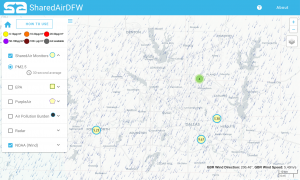
The Menu gives you a choice of three different PM monitor networks to look at: SharedAirDFW, the EPA, and Purple Air. You can look at them one at a time or all at once.
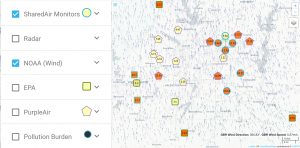
The menu also allows you to see where all the major air pollution permits are located in the City of Dallas. Click on the black dot and it reveals the name of the air pollution permit holder as well as the volume of pollution in tons per year reported in 2018 (the last fully reported year). We only have this mapped inventory of air polluters because of the Paul Quinn College report “Poisoned by Zip Code.” The City of Dallas has no such inventory or map.
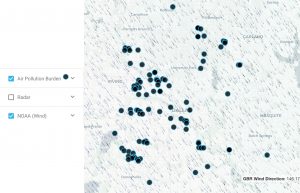
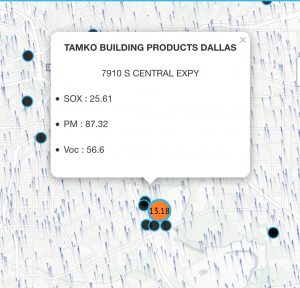
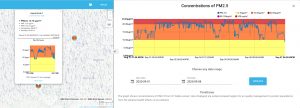
Joppa Air Monitor Already Providing Evidence of Why It’s Needed
Since it began collecting data on the afternoon of August 31st, the Joppa Zion Mothership monitor has consistently recorded the highest average levels of PM among all the deployed SharedAirDFW monitors, as well as all EPA and Purple Air monitors in DFW. These bar charts show the level of PM recorded from most of the current SharedAirDFW network monitors from 8/31/20 to 9/14/20. They’re all accessible to the public through the site.

A New Era for DFW Air Quality and Downwinders at Risk
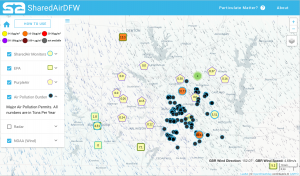
The SharedAirDFW network map displaying monitors from all three monitor networks and major Dallas air polluters identified.
The debut of the SharedAirDFW Network means
21st Century air monitoring finally arrives in North Texas
After three years, and many thousands of hours and dollars, citizens have their own
regional air quality monitoring system.
It’s easy to use, operates in real time, and its monitors are being put where the pollution burdens are greatest.
The Joppa Zion Mothership Monitor: on the Network’s digital map and on its pole after deployment.
Since operation began 8/31, it’s consistently shown higher levels of PM air pollution than other monitors in Dallas.
By January they’ll be 11 more monitors joining it in the Freedman-founded community.
A three-year high-tech collaboration between the University of Texas at Dallas, Downwinders at Risk, the City of Plano, Dallas County, Dallas College, and Paul Quinn College came to fruition today with the official debut of the the SharedAirDFW Network – online, and with an outpost in one of the most polluted neighborhoods in North Texas.
It becomes the first and only regional “hyper-local” air monitoring network in Texas and one of the only ones being built by any US city.
“This network is the purest, most dramatic expression of our 26-year old goal to provide citizens with the tools government won’t,” said Downwinders Director Jim Schermbeck, who’s helped shepherd the Network since it was a National Science Foundation grant runner-up in 2017. “We see SharedAirDFW’s debut as the public health equivalent of turning on electric streetlights for the first time at the turn of the 20th Century. We’re building a utility – the full impact of which won’t be realized for years.”

Dave Dabadeen, Kevin Owen, and Jay Smith – our monitor installation team, deploying one of 11 solar powered satellite monitors in Joppa.
Debuting with eight Particulate Matter (PM) air pollution monitors located from Richardson to Southern Dallas and Mesquite to Fort Worth, the network is scheduled to install over 100 more in the next 12-24 months, including blanketing Dallas neighborhoods whose residents say they’re already breathing bad air but have no way to prove it.
In the last decade published research on the human health effects of exposure to Particulate Matter air pollution has linked it to a variety of illnesses and diseases, including developmental impacts such as Autism, Parkinson’s, Dementia, and IQ loss. These effects have been documented at exposure levels well below U.S. EPA regulatory limits.
All the monitors in the network were built at the Physics Laboratory at the University of Texas at Dallas campus in Richardson. They’re being distributed to members either in clusters of 11, with one larger hard-wired “Mothership” accompanying ten smaller solar-powered ones or the Mothership as its own stand alone unit.
ALL DFW PM MONITORS DISPLAYED ON A SINGLE MAP
PM Air pollution data collected from those monitors, along with information from EPA and DFW Purple Air monitors, are displayed in real time on a digital map accessible to anyone online at www.sharedairdfw.com. For the first time, a single website displays all the online monitors networks collecting PM air pollution data in North Texas on the same map. Besides UTD, Downwinders at Risk, Dallas College, and Dallas County will be displaying the SharedairDFW map on their own websites.
Only Particulate Matter air pollution levels are shown by the SharedAirDFW map now but larger monitors will also be capturing Ozone, or Smog levels. At some point in the near future, that data will also begin to be displayed on the Network map.
MAPPING OF MAJOR POLLUTERS
Also on display are the locations of the major air polluters in the City of Dallas, along with their self-reported pollution volumes – a first-ever inventory of Big D’s air polluters that no level of government currently provides.
MANY MORE M ONITORS IN MANY MORE PLACES
ONITORS IN MANY MORE PLACES
Currently there are only six EPA monitors for Particulate Matter Air pollution in all of North Texas, and only 12 Purple Air monitors online. With the ability to saturate neighborhoods with almost a dozen monitors apiece, SharedAirDFW allows residents, researchers, and policymakers to better pinpoint pollution plumes and health risks.
REAL TIME DATA
For the first time there’s a way for DFW residents get air quality information in real time instead of waiting for up to two or three hours at government monitor sites. The SharedAirDFW monitors display their readings every 30 seconds, 24 hours a day.
AN EMPHASIS ON ENVIRONMENTAL JUSTICE
For the first time there’s year-round, calibrated air quality data being collected in Dallas’ most polluted neighborhood – the Joppa community in Southern Dallas along the Trinity River. The “Joppa Zion Mothership” – named for the adjacent Church – began transmitting on Monday August 31st. It’s linked to two additional “satellite” monitors that began transmitting this last weekend. By January they’ll be 11 monitors in Joppa, making it the most densely monitored neighborhood not just in Dallas, but all of Texas.
Joppa’s monitors are the first of 33 air monitors Downwinders at Rik is deploying in so-called “fence line” locations. After installation in Joppa is completed, another 11 will be installed in West Dallas, and then in and around Midlothian as well.
In the two weeks since the first Joppa monitor was installed, it’s consistently recorded higher levels of PM pollution than other monitors in the SharedAirDFW network as well as local EPA and Purple Air monitors. Schermbeck said those results vindicate the decision to locate monitors in predominantly Black and Brown neighborhoods disproportionately burdened by their proximity to industrial polluters. “Our monitors are going where people are most harmed by air pollution, but least able to do something about it.”
James McGuire has Left the Building, But Will Dallas’ City Hall Continue to Neglect Environmental Health and Justice Remain?
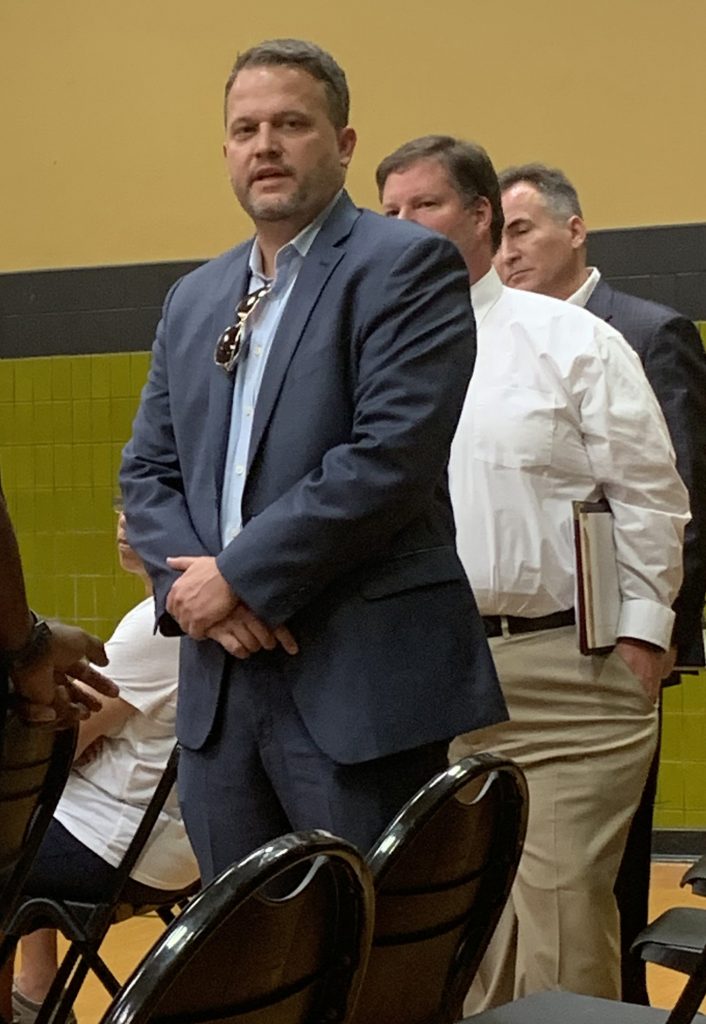
Friday was reportedly James McGuire’s last day as Dallas’ Director of the Office of Environmental Quality and Sustainability. He’s said to be taking leave for the rest of July and then he’ll move on…to a position at the Trump EPA. After serving for sometime as an “Interim Director,” he’d been the real thing for the last three years.
McGuire’s departure comes almost a month before the unveiling of the implementation schedule of his crowning achievement, Dallas’ Climate Plan, in front of the City Council. Speculation about his leaving ranges from this being a done deal triggered by the Climate Plan’s passage in May, to being fallout from the City being included as a defendant in Marsha Jackson’s Shingle Mountain lawsuit two weeks ago.
During his tenure McGuire, a City attorney who got assigned the OEQS position, earned kudos for policies that directly affected internal City operations – where and how the City bought electricity for it’s facilities, or how efficiently city operations saved water.
But almost every time he stepped outside of City Hall into public policy his record has been a disaster, especially for Southern Dallas.
Time and again, when McGuire had the chance to help Southern Dallas residents, he turned his back, or worse, contributed to the problem they were complaining about. A short list of his “greatest misses” includes:

- Promotion of Batch Plants in Southern Dallas. In 2018 and 2019 four separate batch plants were trying to win permission from the city to locate in already overburdened Joppa and Flora Farms (Shingle Mountain). McGuireand OEQS endorsed all of them. But much worse was McGuire’s purposely misleading statements about current air quality in Joppa during the Council’s debate on the permits. Asked if current Particulate Matter pollutant levels in Joppa should be of any concern, McGuire disingenuously said EPA monitors “in Dallas” showed levels “meeting national standards.” It wasn’t until a pointed follow–up question from a Council Member reveled the cynicism of his answer: the nearest (and only) EPA PM monitor was nine miles away, on the other side of downtown. Residents defeated all four batch plant permits despite OEQS’s endorsement.
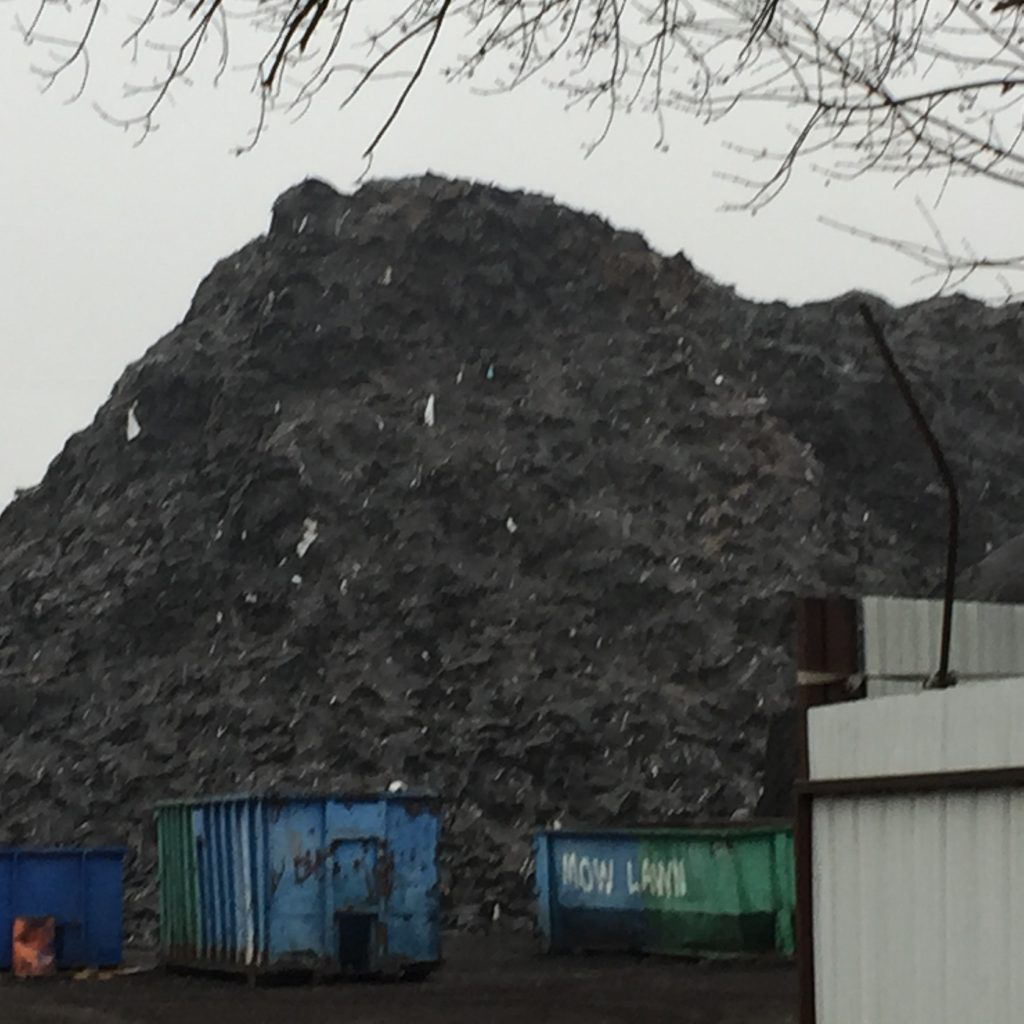
- Creation of Shingle Mountain. The six story 100,000 ton illegal dump – Dallas’ largest and most dangerous – was over a year and a half old and was violating a multitude of laws and regulations with impunity when McQuire first learned about it from DMN columnist Robert Wilonsky. The most notorious environmental justice disaster in Dallas in 25 years happened on his watch without him or anyone in his department noticing. Compounding this mistake – which nobody has every apologized for – was the OEQS’ absolute obsession with storm water non-compliance issues at the dump to the exclusion of any concern for adjacent residents’ health from fumes or particulate matter containing carcinogens. At no point over the last two years has McQuire or OEQS said anything about how toxic the dump is to human health, but he and the Department have been very, very concerned about illegal storm water runoff.
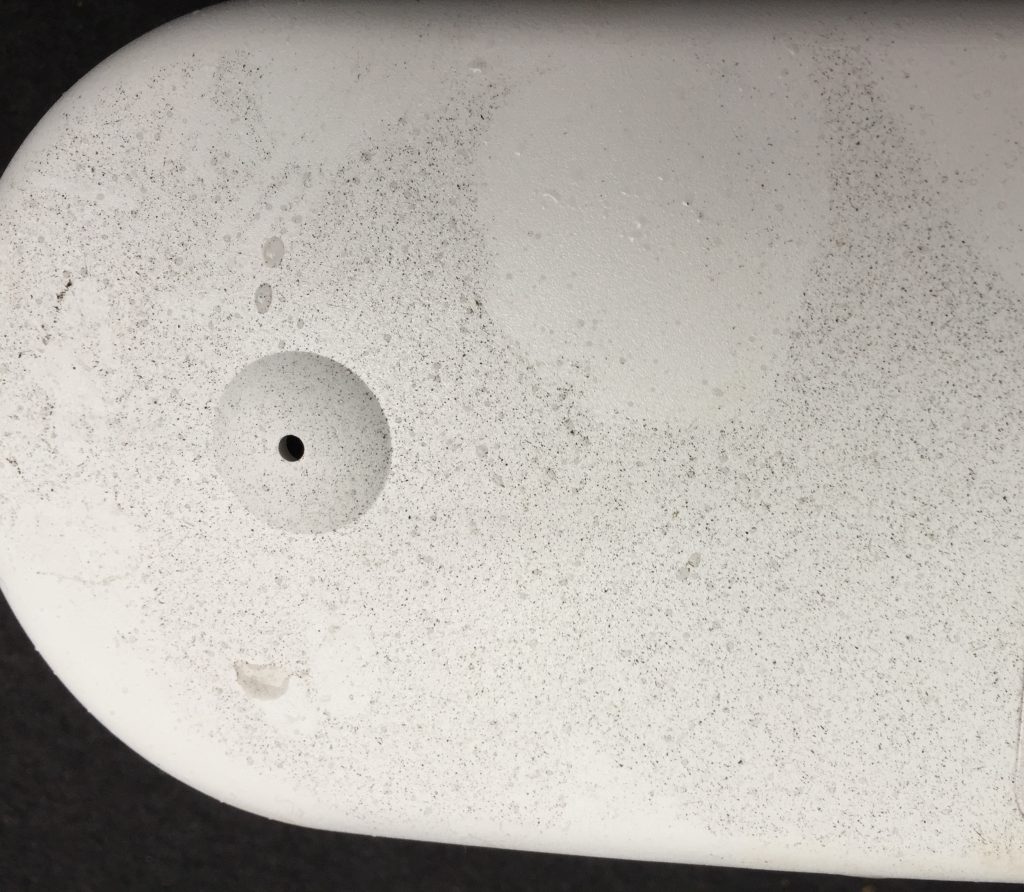
- Denying pleas for air quality monitoring from residents of Joppa and Shingle Mountain. In 2018 OEQS representatives rejected Joppa residents’ request that the City provide air quality monitoring – even after portable monitor readings by Downwinders found high levels of PM pollution there, and even though the City had the monitoring equipment to do so. McGuire and OEQS also tuned down Marsha Jackson’s pleas to do air monitoring at her house under the six-story Shingle Mountain illegal dump, even though Downwinders’ portable monitors placed on her windowsill were completely covered in a black dust and recorded hazardous levels of PM pollution.
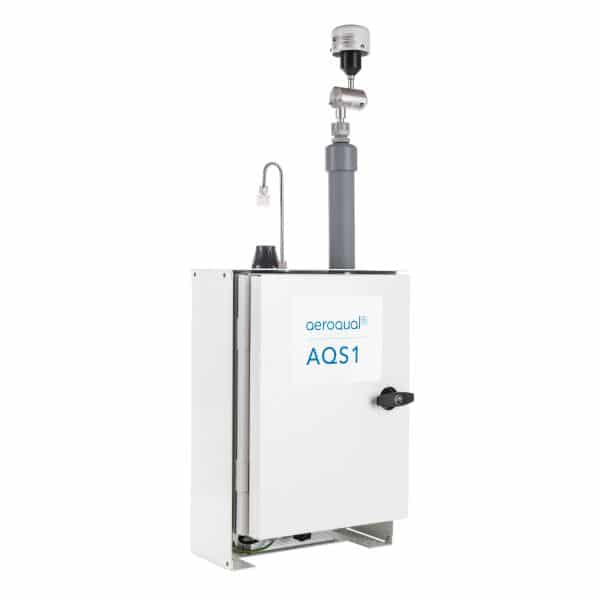
- The collapse of the City’s “Breathe Easy” air monitoring initiative. After planning for years to deploy 10 to 12 air monitors at public schools in Dallas, the City finally identified the schools it wanted to participate, bought a dozen new Aeroqual air quality monitors, and then informed DISD of its intent. DISD said no thanks; they didn’t want the monitors on school property. The 12 brand new monitors are sitting in a closet somewhere unused. And by the way, no one would know about this epic fail if Downwinders hadn’t fought tooth and nail through the Texas Open Records Act to get the documentation. DISD’s rejection was already a done deal when OEQS staff gave a briefing to City Council on the project…but neglected to mention that the school district had rejected the idea. Some folks would call that a cover-up.
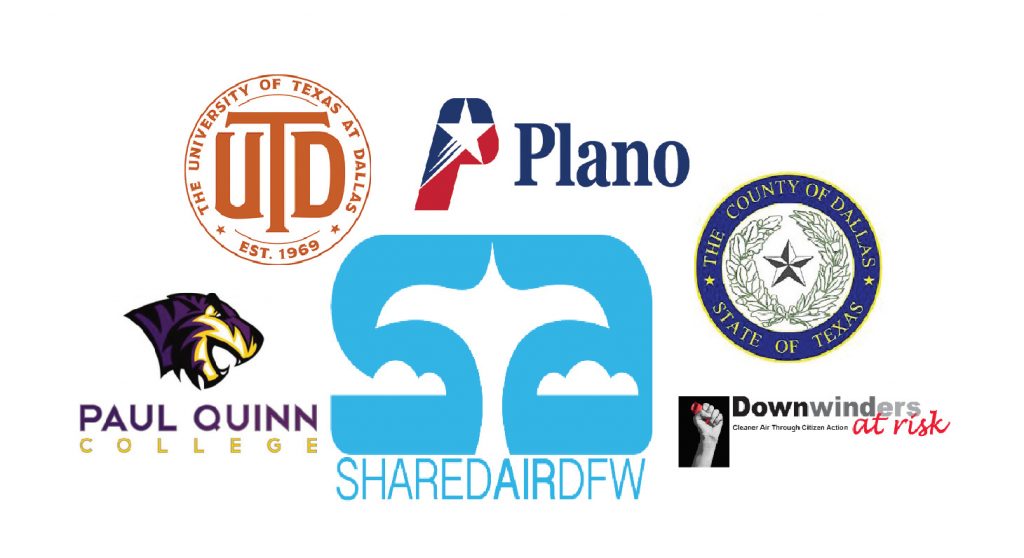
- Withdrawing from the SharedAirDFW Community Air Monitoring Network. Before he began the City’s own Breathe Easy project, McGuire and Dallas was part of group working to build a regional air monitoring network that included Plano, Dallas County, Dallas County College, Paul Quinn College, and area school districts among others. After participating in the Network for a year, he and the City abruptly withdrew their support when a proposed governing structure for the Network required citizen participation. All the other entities stuck around ,and the first SharedAirDFW monitors are about to go online in the next 30-45 days. Meanwhile the rival Breathe Easy effort McGuire invented to avoid public participation went bust. He single handedly set the City of Dallas back years on this front.

- Using a “compliance is protection” defense to avoid talking about environmental health issues. There’s now a decade of scientific evidence that connects exposure to levels of pollution far below the “national standard” set by EPA to serious health injury, including early death. But McGuire and OEQS never acknowledged this evidence. Not once. Instead, as long as the one (!) PM monitor in Dallas showed levels that were within the obsolete 24 hour or yearly standard enforced by EPA, the conclusion was always that “Dallas was in compliance.” But science says compliance isn’t protection. Houston’s environmental department employs a toxicologist who goes to Black and Brown neighborhoods where batch plants are being proposed and tells residents there’s no safe level of exposure to PM pollution. Dallas had a lawyer who stayed in his office, spoke of “compliance,” and approved them.
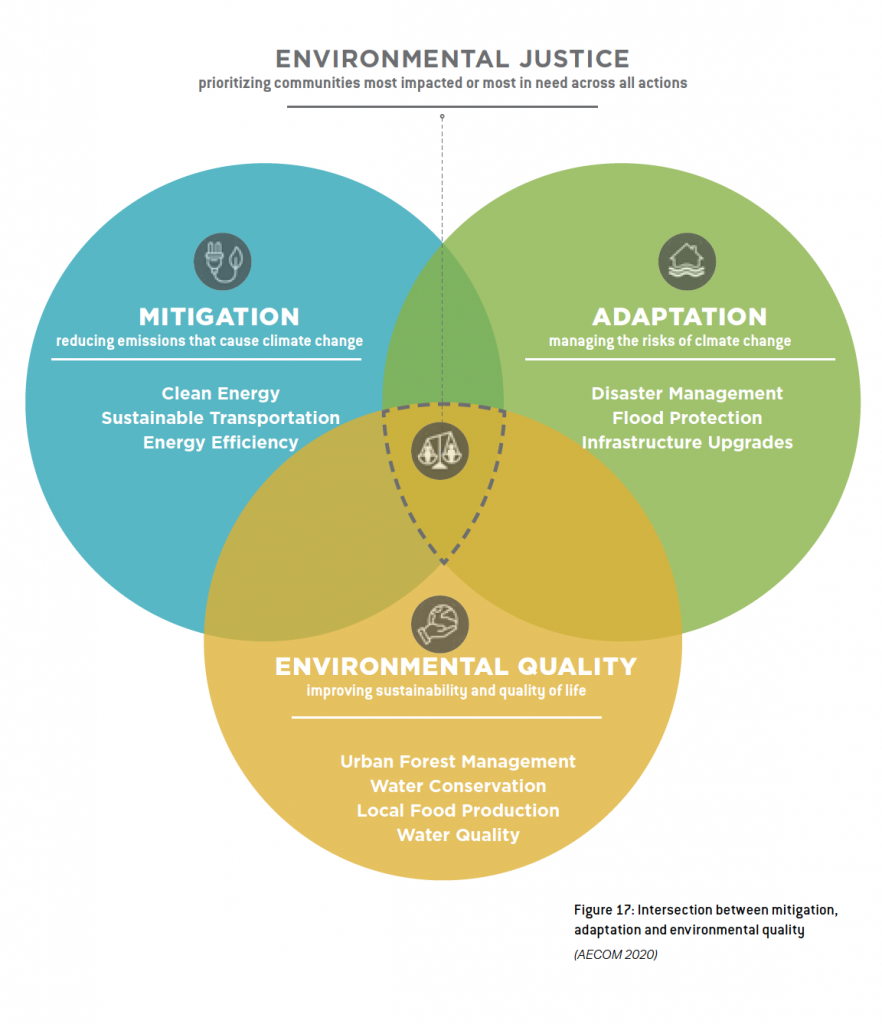
- Using race-neutral language to to discuss racist environmental justice issues. Although the OEQS probably used the word “equity” more than any other city department in its presentations, it refused to acknowledge that racist redlining, zoning, and decision-making underlies much of Southern Dallas’ pollution problems. Instead, it used all kinds of euphemisms for “racist” to describe the predicament of Joppa and Shingle Mountain residents. When the City’s Climate Plan came to dealing with environmental justice, it threw away the original race-based definition by Dr. Robert Bullard, the guy who invented the phrase, and adopted a consultant’s definition that ignored any mention of race. Nobody but Southern Dallas residents noticed. Oh yeah, it also mentioned water conservation, but not clean air.
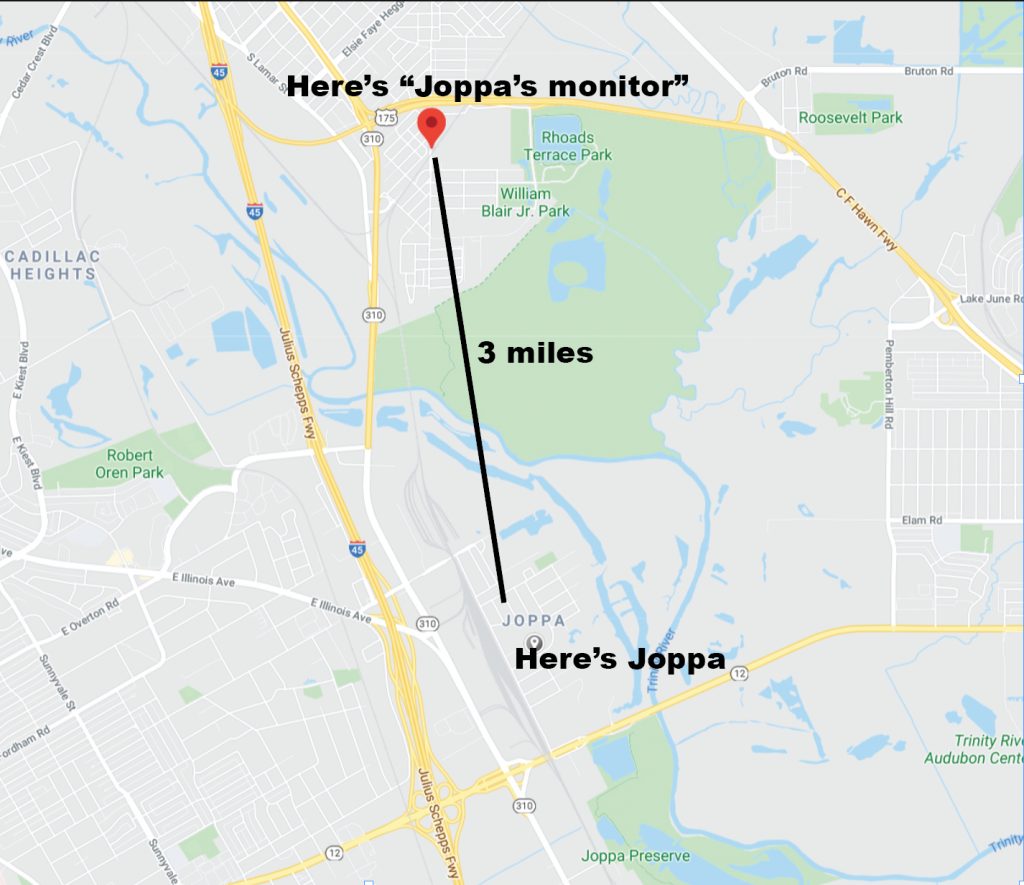
- One of his final acts as OEQS Director was also one of McGuire’s most cynical, which is saying a lot. In June he and his staff hailed the official announcement of the City’s deployment of a single PM monitor “in Joppa” when in fact the monitor is located three miles north of the former Freedman’s town in the entirely separate neighborhood of Bonton. In one of the most up-is-down moments of McQuire’s administration, OEQS staff actually told their audience of impressed Council Members that a monitor located three miles away from the closest source of Joppa industrial pollution would be better able to capture that pollution than it would across the street in Joppa itself. They presented no evidence to prove that absurd claim, most likely because it runs contrary to the last quarter century of actual science. But that evidence was ignored to try to make the City look like it was doing something it was not.
With a record like that you wonder how the guy kept his job as long as he did until you realize almost all of his sins were committed against Southern Dallas and People of Color. When it came to things like the City’s feeble Climate Plan that North Dallas white environmentalist were craving, he was an ally. But none of those folks lived in neighborhoods with a batch plant or a illegal dump. Their support came cheap and was completely disconnected from reality on the ground in Southern Dallas.
In choosing McGuire’s replacement there’s a chance to change the way the City of Dallas looks at environmental issues. Fundamental to this change must be inclusion of “environmental health” as a primary focus. The goal must not be just to comply, but to protect.
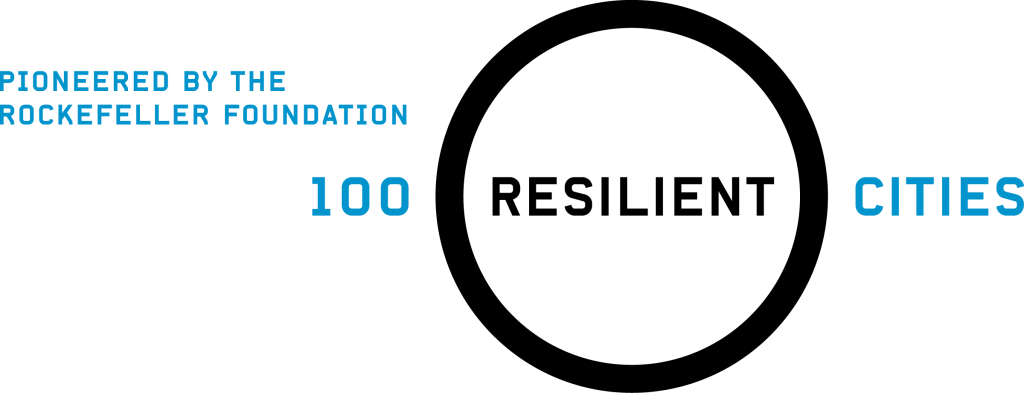
For the past five years or so “resilence” and “sustainability” have been the hot code words for action surrounding green issues. Fueling this semantic change was the Rockefeller Foundation, that for awhile was giving huge grants to every city that would commit itself to a resilency planning. Dallas chased and got that money and so has a “Resilency Plan” that you’ve probably never seen, out of which sprang the City’s Climate Plan. But that Rockefeller money has stopped flowing and so “resilency” is suddenly getting a lot less play.
Now it’s “sustainability.” Still chasing grant dollars, the City practically tripped over itself in swiftly changing the name of the “Office of Environmental Quality” to the “Office of Environmental Quality AND Sustainability” and created a while new Council “Committee on the Environment AND Sustainability.”
But more often than not “Sustainability” doesn’t include environmental health. Sustainability is water conservation, or tree cover, or renewable energy. It isn’t fighting batch plants, racist zoning, or reducing the health damage caused by pollution meeting the national standard by way of a monitor on the other side of town. “Sustainability” is a word that takes the emphasis away from the goal of better human health and puts it on abstract policy goals. That makes it a red flag for People of Color whose health suffers disproportionately from pollution. It signals yet another detour away from addressing their daily poisoning.
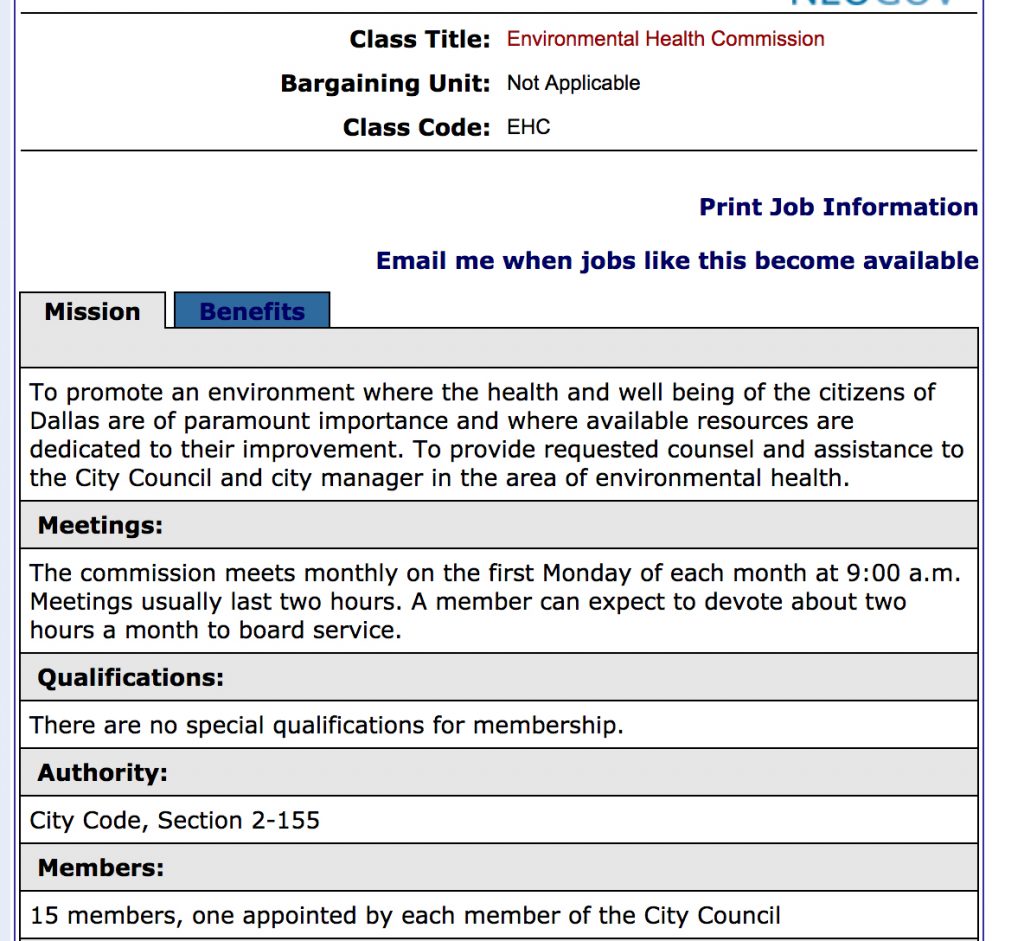
That’s why Downwinders and Southern Sector Rising fought for inclusion of the words “environmental health” in the City’s Climate Plan back in May. But not even a single Dallas City Council Member would agree to include it. So they’ll be yet another City Committee formed to address “sustainability” but not one that has environmental health in its mission.
Now City Hall has a chance to send a message that they’re listening; to make a break with the status quo that produced that long and undistinguished record above. The new OEQS Director could be a turning point…or just another brick in the wall.
Downwinders is advocating McGuire’s replacement should be at least two things: 1) a Person of Color, and, 2) a scientist, preferably a toxicologist, epidemiologist, or public health specialist. No more lawyers.
OEQS needs a fresh new face. One that isn’t already weighted down by City Hall baggage. Black and Brown scientists are likely more qualified to address environmental health injustices in Dallas due to their perspective on race and the environment, and therefore should be proactively recruited for the job” Their perspective is desperately needed at Dallas City Hall.
But a new bio at the top won’t do Southern Dallas much good unless the mission of the OEQS changes as well.
Before McGuire, it was commonplace for environmental health issues to be addressed by the City – either through the former Environmental Health Commission or campaigns like the one then Mayor Laura Miller mounted against a wave of new coal plants being pushed by Rick Perry. McQuire’s neglect of environmental health is the anomaly here, not the other way around.
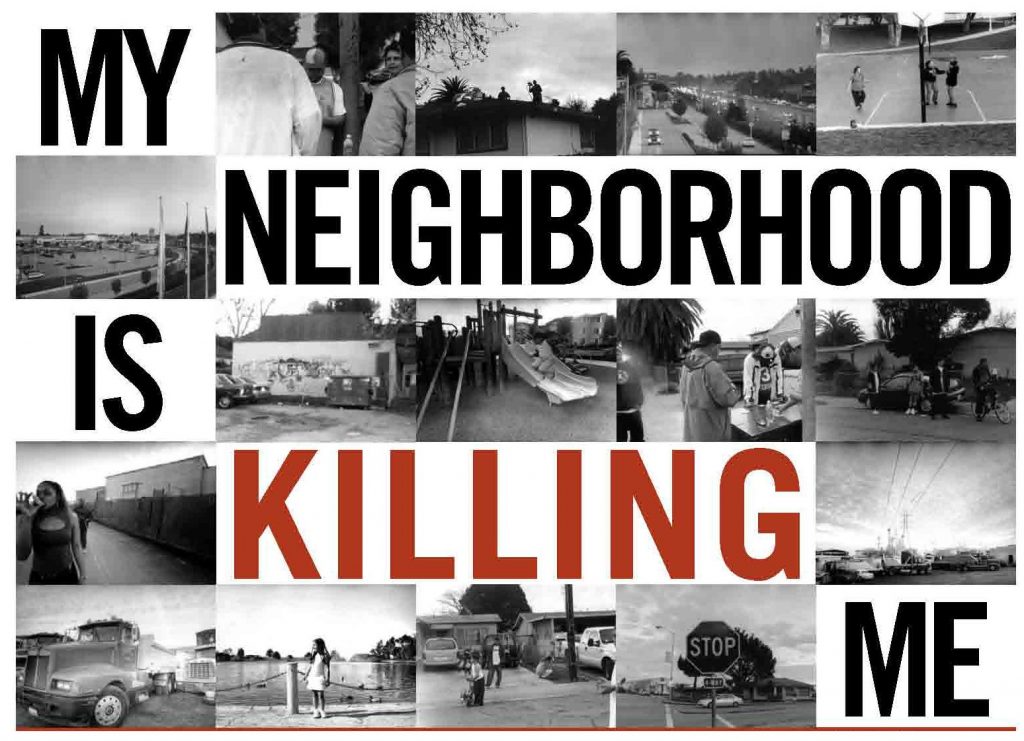
That kind of pro-active approach needs to be restored, if only to head-off problems before they become lawsuits. The new OEQS Director should feel free to speak about what the science says, and fully embrace public health considerations, not dodge them.
Given the context of the last two months of national uprisings, the situation on the ground and in the courts at Shingle Mountain, plus the rapidly advancing public dialogue on all things Race, the OEQS needs to come to terms with its role as a public health arbiter for Southern Dallas. It would be great if this next Director saw their job as working to reduce environmental health damage there instead of trying to cover it up.
PM Pollution and COVID
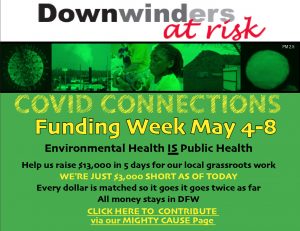
The Massachusetts-based Peace Development Fund has chosen to spotlight the COVID-connected work of
Downwinders at Risk and 12 other groups
across the country this week in order to help raise funds for that work.
As of late last night successfully met our original goal of $10,000. THANK YOU. So now we’re setting our sights on trying to raise an additional $3,000 by Friday. All of this money goes to local DFW program work in front line communities that are most vulnerable to
COVID infection.
Help us help more people.
CONTRIBUTE HERE
Thanks
______________________________________
COVID Connects:
Particulate Matter Air Pollution
to Increased Risk of Disease
What is It?
You’ve heard of the dangers of second-hand smoke? PM is industrial second-hand smoke.
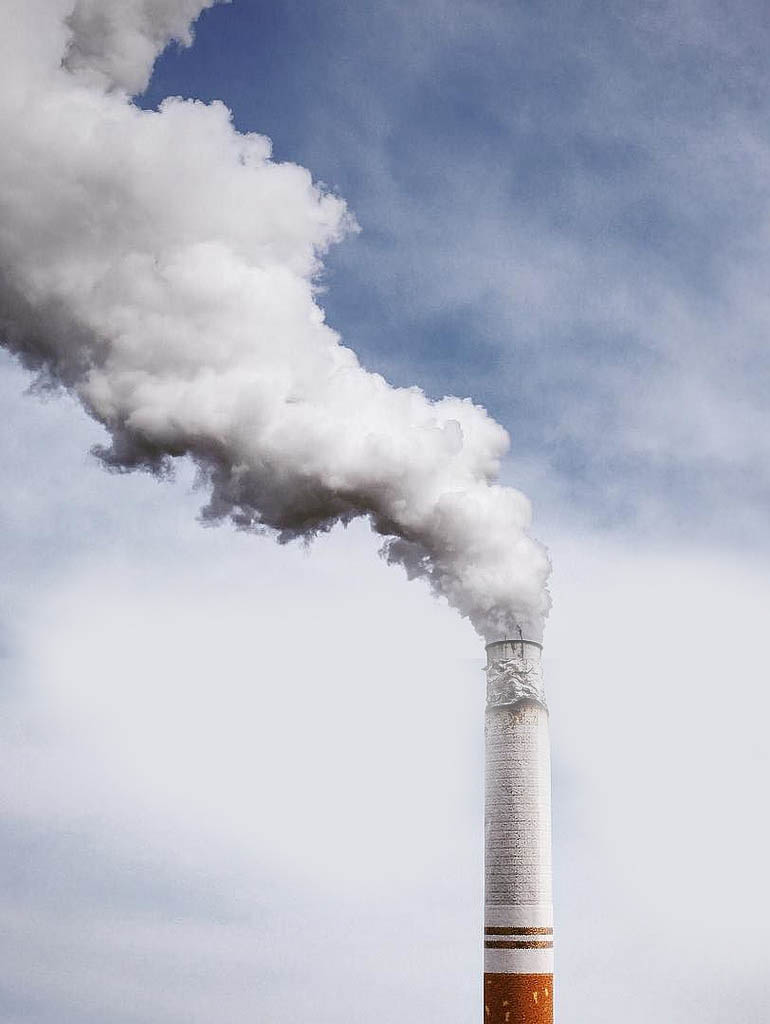 Research over the last decade connects PM pollution with not just lung and coronary diseases, but IQ loss, Autism, Dementia, Parkinson’s Disease, Diabetes, Immune-Deficiency, depression, and blindness. Research also shows Black and Brown residents are exposed to more PM pollution and at higher levels than most of their white peers.
Research over the last decade connects PM pollution with not just lung and coronary diseases, but IQ loss, Autism, Dementia, Parkinson’s Disease, Diabetes, Immune-Deficiency, depression, and blindness. Research also shows Black and Brown residents are exposed to more PM pollution and at higher levels than most of their white peers.re-thinking freeways. We’re in the weeds with neighborhood groups plotting new land use plans separating PM sources from people, or eliminating them altogether. In essence, we’re conducting an anti-smoking campaign aimed at machines.
Why Do It?
Sources of PM pollution are controlled by local gov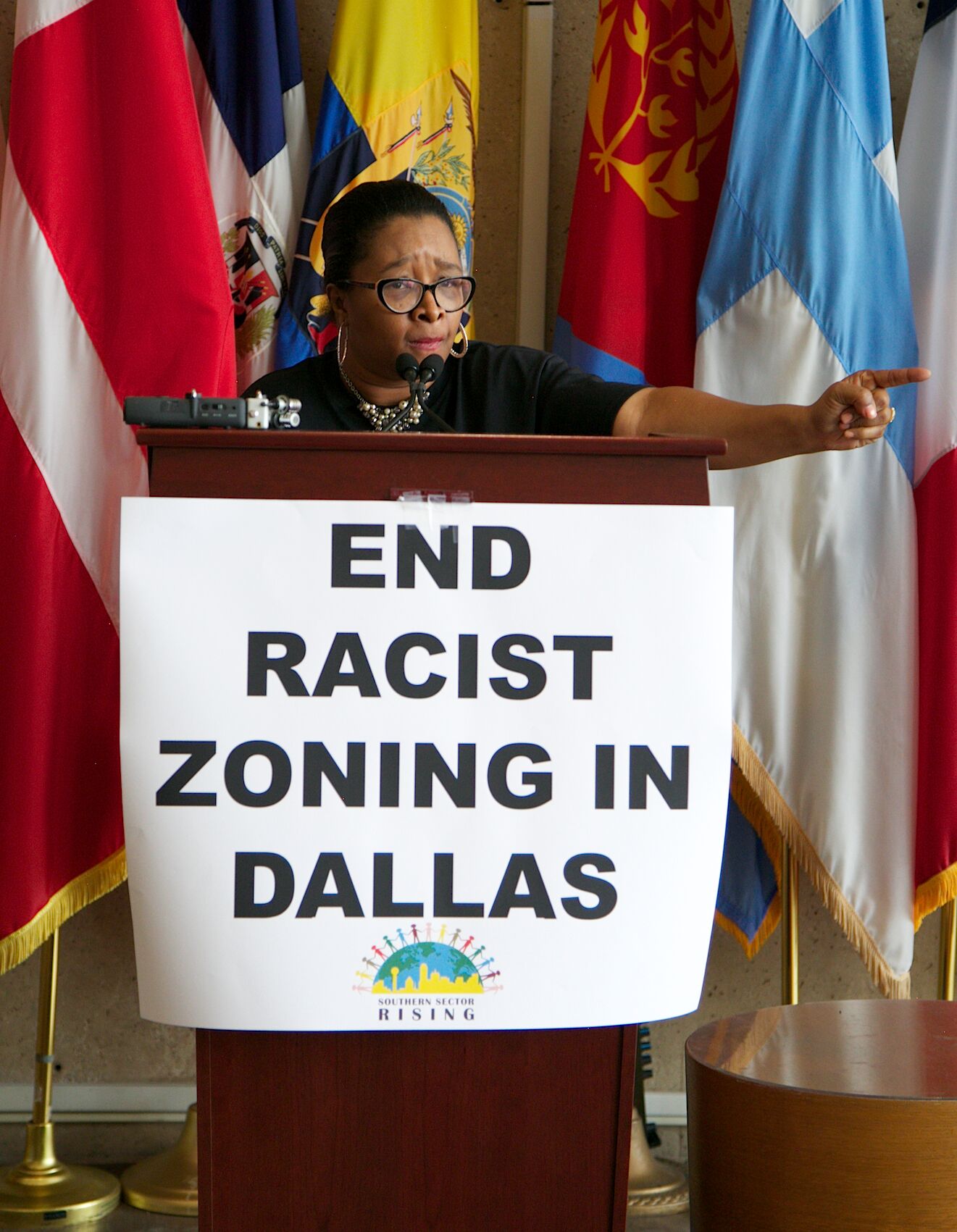 ernments through zoning and other municipal and county policies. As a local group, North Texas is where Downwinders is most effective in making change.
ernments through zoning and other municipal and county policies. As a local group, North Texas is where Downwinders is most effective in making change.
After the 2016 presidential election it was clear we couldn’t make progress on DFW chronic smog without good faith partners at EPA. So we turned our attention to addressing the most insidious air pollutant that can be controlled by local action. We found we could have a big impact on how these very small toxic particles are affecting DFW residents.
What’s the COVID Connection?
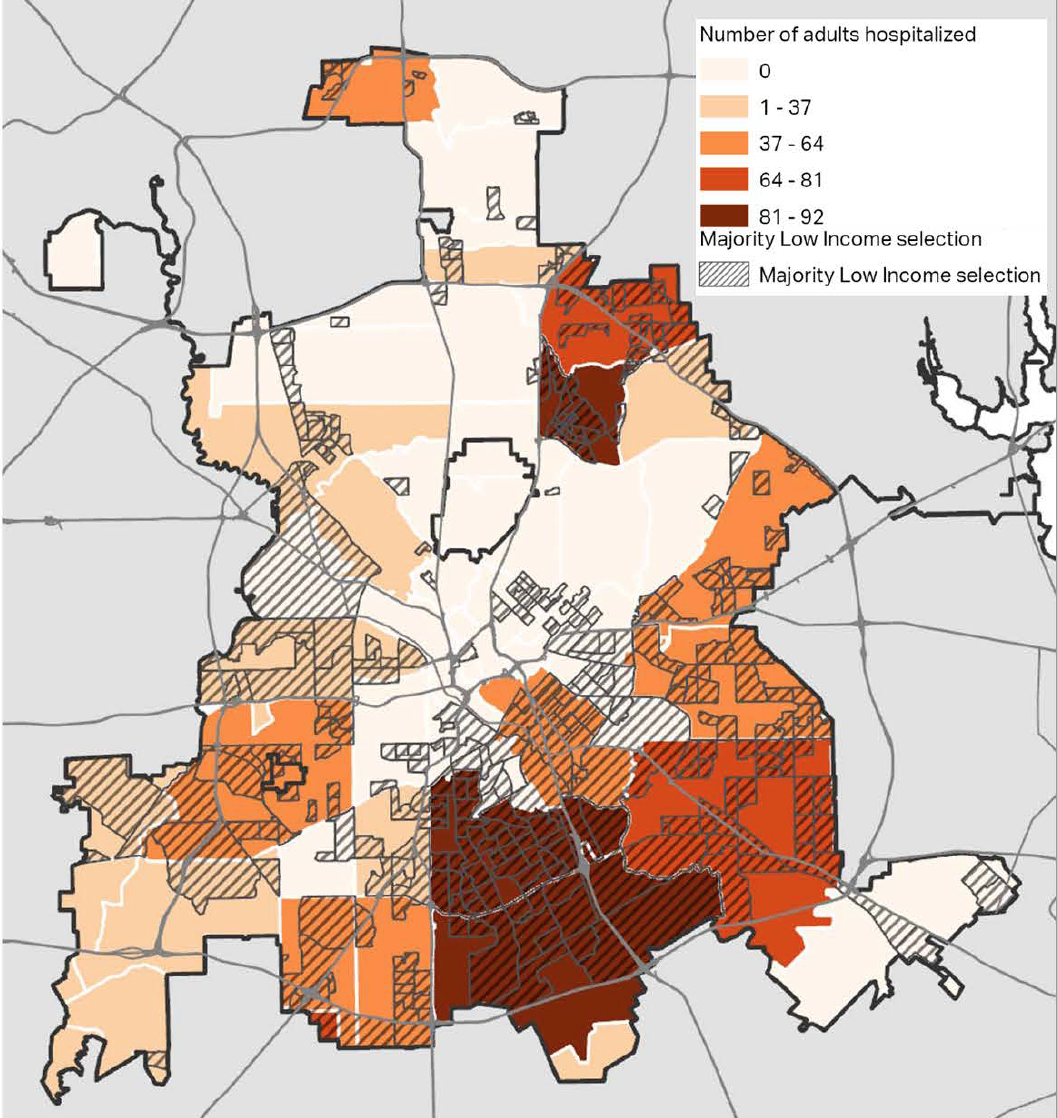
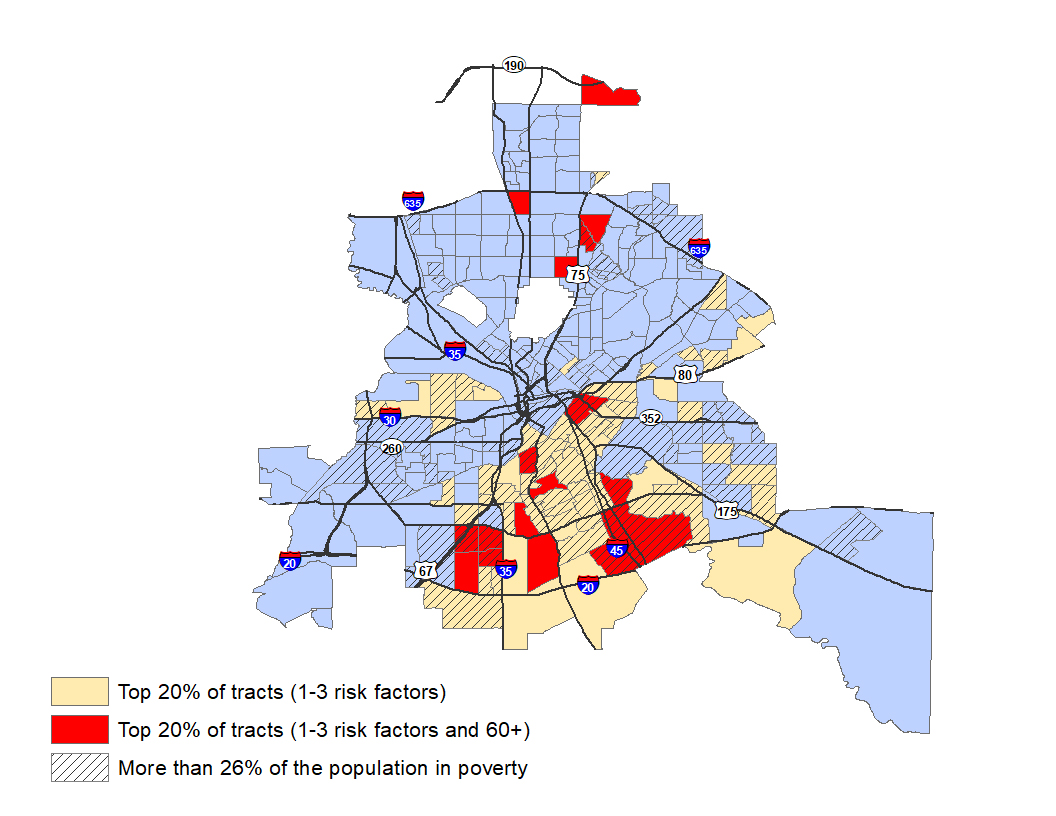
STATUS?
Since 2017 Downwinders has purchased five portable Aeroqual PM 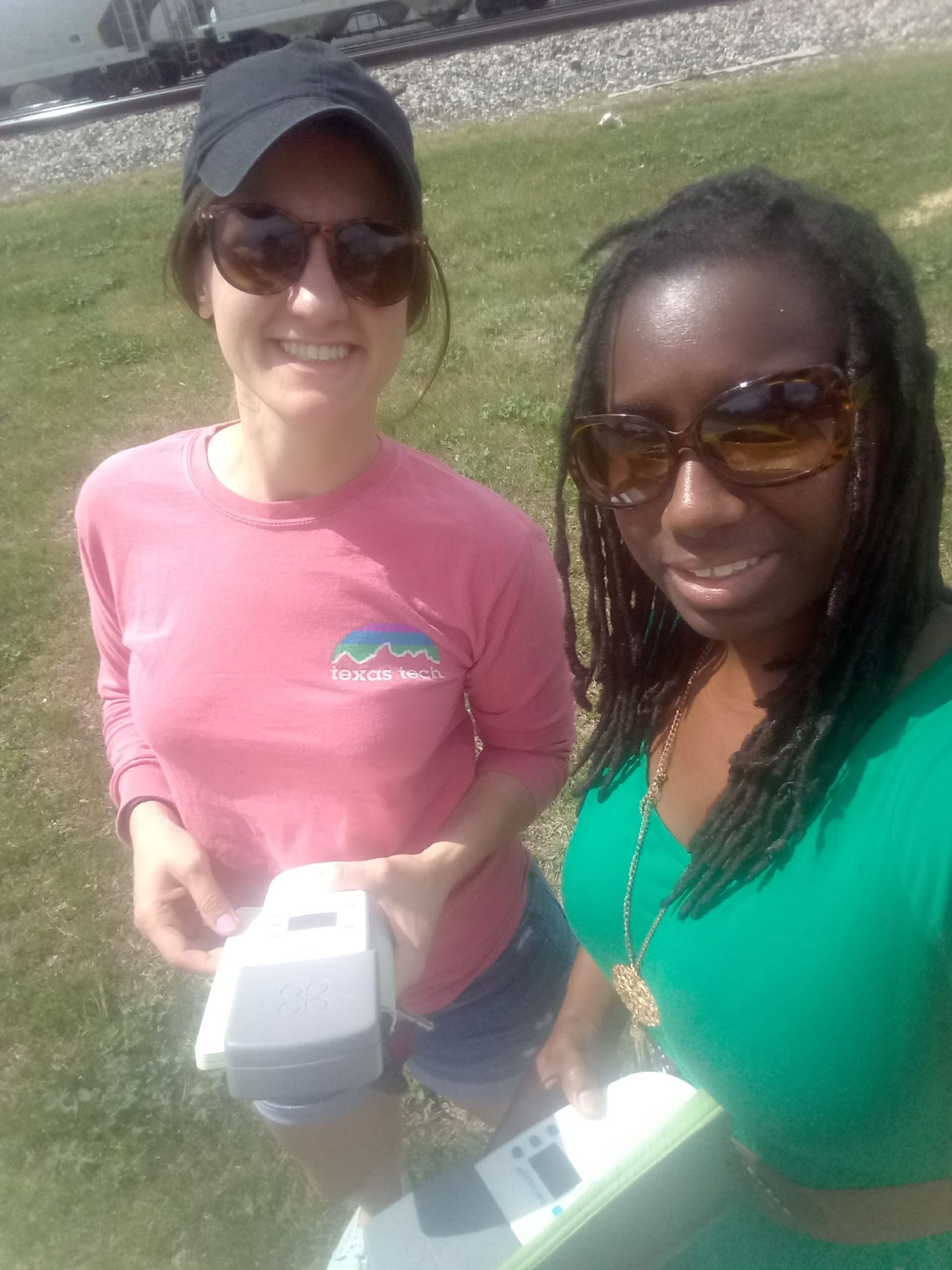 monitors that have been used to track PM Air pollution in DFW and identify hot spots. These portable monitors were the first to record PM levels in the Joppa community in Dallas and the Shingle Mountain illegal dump. We also offer free training in how to use these monitors.With UTD and others, Downwinders is building a 100 + PM monitor network for DFW to track the pollutant in real time across the region.
monitors that have been used to track PM Air pollution in DFW and identify hot spots. These portable monitors were the first to record PM levels in the Joppa community in Dallas and the Shingle Mountain illegal dump. We also offer free training in how to use these monitors.With UTD and others, Downwinders is building a 100 + PM monitor network for DFW to track the pollutant in real time across the region.
Dallas’ climate plan sets goals for electrification of the DART bus fleet by 2040 but other cities are moving faster.
For the last three years debate over the siting of proposed new batch plants has raised the profile of Particulate Matter at Dallas City Hall and around North Texas.
COVID CONNECTIONS
Downwinders At Risk was already dedicated to fighting for environmental health in North Texas before the COVID virus hit.
Focusing on harmful Particulate Matter, we were already supporting grassroots efforts to reduce the air pollution burdens in predominantly Black and Brown neighborhoods.
We were already building out local capacity to monitor DFW air pollution and advocating an increased role for local cities and counties to protect their residents from environmental health threats.
All of that work was important before March. It’s become more important since then. But our responsibilities on the ground are outstripping our ability to support them adequately. Like other non-profits, the virus has made it harder to do even the simple things.
This week you can help provide some relief.
The Peace Development Fund has chosen to spotlight the COVID-connected work Downwinders is doing, along with that of 12 other grassroots groups across the country to help supplement their budgets during the crisis. The Fund and generous donors are matching every dollar we raise this week up to $10,000 – that’s a $20,00,000 grant on the line.
We have until Friday to raise the $10,000.
Beginning today and continuing thru Tuesday the 5th at Midnight you can help us meet this goal by contributing via our North Texas Giving Day Page.
Then Wednesday thru Friday the Development Fund has its own Downwinders Mighty Cause pay portal you can also use.
We’re using each day this week to show how our various pieces of program work is more relevant than ever before. Today it’s an update on our ambitious new DFW air monitoring network – SHAREDAIRSDFW.
We know everyone is having a hard time, but with the Development Fund matching your dollars, you can make whatever contribution you give go twice as far to benefit those at highest risk.
Thanks for your support,


Evelyn Mayo, Chair
COVID Connects:
Vulnerable Communities to the Need
for Better Air Pollution Monitoring
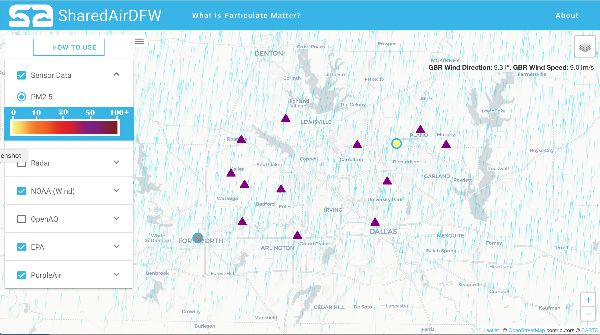
A screenshot of the SHAREDAIRDFW network map being assembled by UTD students and Downwinders at Risk. This map will soon be available at websites hosted by UTD, Dallas County and Downwinders, Only two of the over 100 new monitors are installed (dots) but more are on their way.
What is It?
The SHAREDAIRDFW community air quality monitoring network. 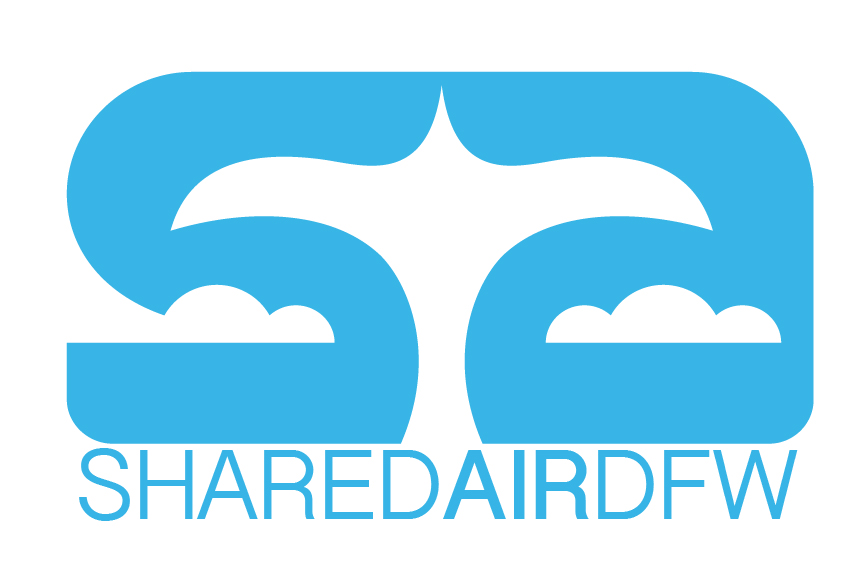 With its partners at UTD, Downwinders is building a new air monitoring network for DFW that will provide real time information from over 100 locations, including industrial hot spots in Joppa, West Dallas and Midlothian.
With its partners at UTD, Downwinders is building a new air monitoring network for DFW that will provide real time information from over 100 locations, including industrial hot spots in Joppa, West Dallas and Midlothian.
Why Do It?
Dallas County’s 2.7 million residents currently share only one EPA 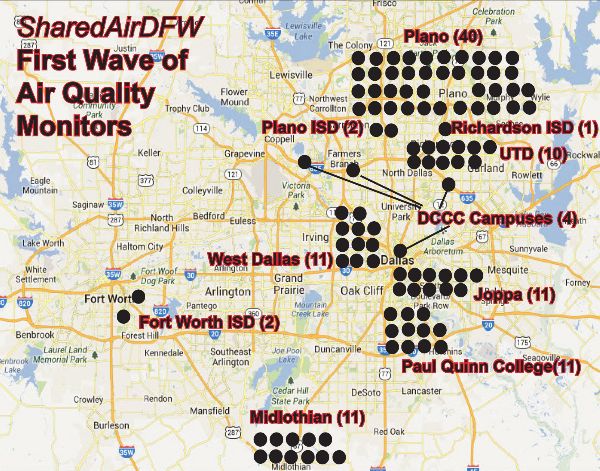 Particulate Matter air pollution monitor, north of downtown. Tarrant County has two and Denton County one. These monitors only reflect very local conditions and don’t reveal pollution levels in “frontline” neighborhoods where industry operates next to homes.
Particulate Matter air pollution monitor, north of downtown. Tarrant County has two and Denton County one. These monitors only reflect very local conditions and don’t reveal pollution levels in “frontline” neighborhoods where industry operates next to homes.
Making pollution burdens more equitable across racial and class lines requires identifying, measuring, and mapping those burdens: “You can’t fix what you don’t measure.” The SHAREDAIRDFW network is the first attempt to permanently map air pollution burdens across North Texas and make that information easily accessible to the public 24/7.Dallas County’s 2.7 million residents currently share only one EPA Particulate Matter air pollution monitor, north of downtown. Tarrant County has two and Denton County one. These monitors only reflect very local conditions and don’t reveal pollution levels in “frontline” neighborhoods where industry operates next to homes.
Making pollution burdens more equitable across racial and class lines requires identifying, measuring, and mapping those burdens: “You can’t fix what you don’t measure.” The SHAREDAIRDFW network is the first attempt to permanently map air pollution burdens across North Texas and make that information easily accessible to the public 24/7.
What’s the COVID Connection?
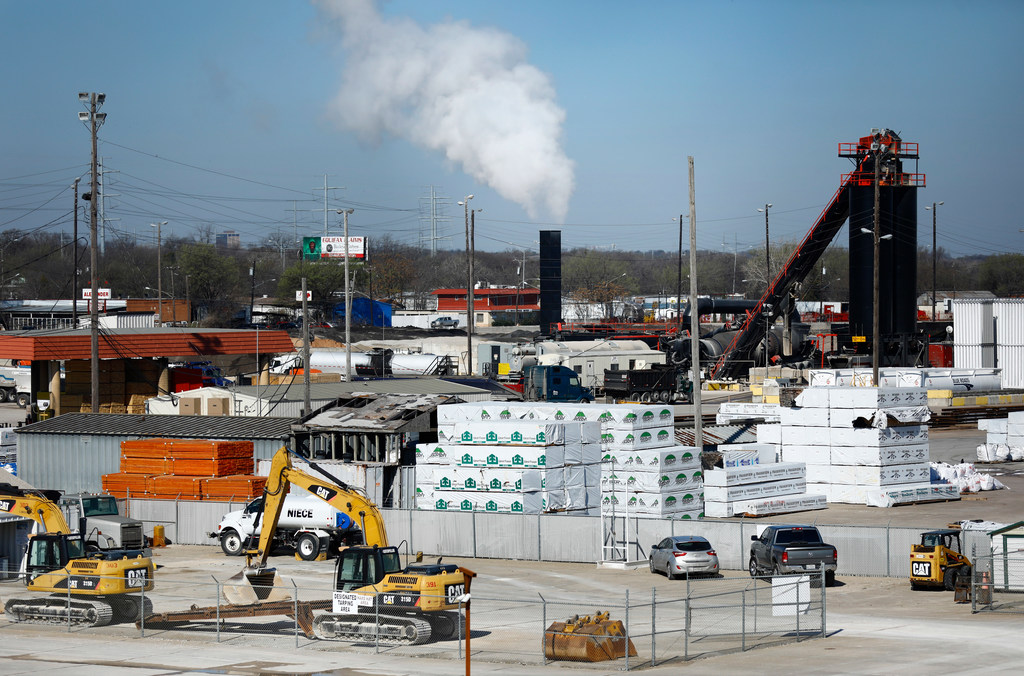
Research being done during the COVID pandemic concludes those living with the highest air pollution burdens are among the most vulnerable to being infected and dying from it. Specifically there seems to be a connection between a person’s exposure to Particulate Matter and Nitrogen Oxide air pollutants and the likelihood of contracting COVID. Past studies from the SARS epidemic also point to a strong link between exposure to air pollution and vulnerability to illness.By mapping where the heaviest air pollution burdens are, we can avoid adding to that burden and pursue policies targeting pollution decreases. We can begin to reverse the circumstances that makes the most pollution-impacted neighborhoods the most vulnerable to disease.
STATUS?
Via teleconferencing, UTD students are finishing up the digital map the Network 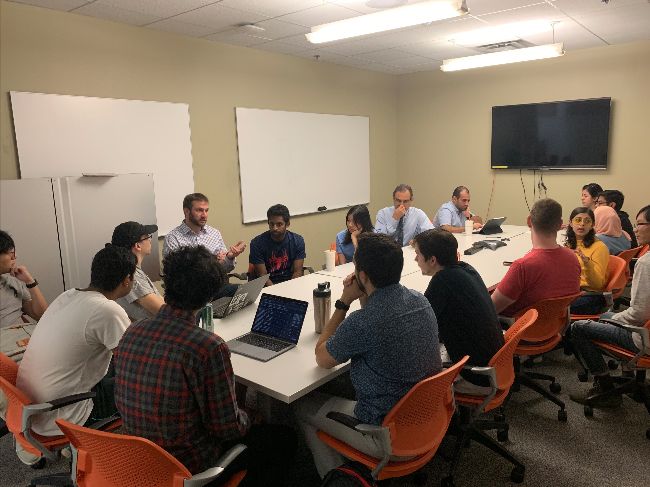 will use to display its real time air quality information. This map is meant to display not only the levels recorded by our own fleet of monitors, but easy access to the handful of EPA and Purple Air monitors in DFW as well.
will use to display its real time air quality information. This map is meant to display not only the levels recorded by our own fleet of monitors, but easy access to the handful of EPA and Purple Air monitors in DFW as well.
The map will be hosted on websites hosted by UTD, Dallas County and Downwinders.The first community monitors are slated for the former Freedman’s town of Joppa, where Downwinders bought a utility pole for the installation of the larger Mothership monitor. We’ve got a contract for Internet service and are now trying to tie down electrical power.
After a planned community meeting in March was canceled, we’re now gearing back up to find hosts for all ten “satellite” monitors. We hope to be able to begin operat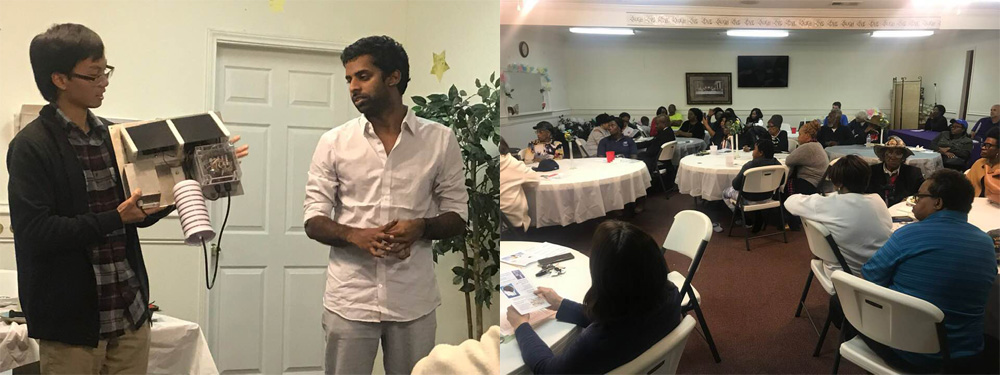 ion this summer.Once we’re up and running in Joppa, West Dallas is next and then Midlothian. In all Downwiwnders will be responsible for 33 of the over 100
ion this summer.Once we’re up and running in Joppa, West Dallas is next and then Midlothian. In all Downwiwnders will be responsible for 33 of the over 100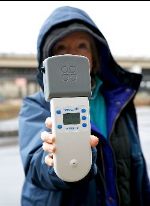 network monitors going up as part of the first wave installation.
network monitors going up as part of the first wave installation.
……MEANWHILE, Downwinders is using its portable monitors to record air quality in front line neighborhoods during the shelter-in-place periods so we’ll have a baseline for what cleaner air looks like.
How the Dallas Climate Plan Baits and Switches on Air Pollution

A little after 5 pm Monday February 3rd, the Office of Environmental Quality and Sustainability (OEQS) at Dallas City Hall released its draft recommendations for the city’s climate “action” plan. There are 93 “action items” including transportation, buildings, green spaces, water management, solid waste, and urban agriculture. Most are without imagination or timelines, meaning that even the most milk toast-like recommendations being made will have to be fought for tooth and nail to be done in a timely manner.
Like the department that generated them, the list of recommendations is effusive about stormwater management and tree-planting and silent on more challenging issues such as inequitable pollution burdens and the City’s own reliance on natural gas. It once again puts the spotlight on the lack of any environmental health expertise at Dallas City Hall in the decision-making process. When Dallas OEQS staff talk about the environment, what they really mean is “conservation” – a definition that’s been obsolete since at least the 1970’s.
There’s no better example of how this tunnel vision affects policy than OEQS staff invoking DFW’s chronically poor air quality (i.e. an environmental health problem) to sell the need for its Climate Plan…only to see the actual Plan ignore poor air quality as a serious health issue that could use some innovative thinking.
For over a year now, anytime you saw a Climate Plan presentation by Dallas OEQS staff, it always cited DFW’s smog problem as something that would only get worse as the climate crisis played out. “Everyone here is probably aware of DFW’s longtime air quality problems” or some approximate was the standard riff. And of course, everybody was. Heads nodded. Audience members were sometimes asked if they knew anyone with asthma and hands immediately shot up. That was the point. The selling point.
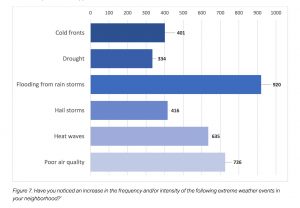 Because, until recently at least, the abstract nature of “the climate crisis” made it difficult to get people excited about the idea of a plan. Staff/Consultants needed a hook. And that hook was something everyone could relate to and probably already knew about: DFW’s three decades of violating the Clean Air Act. If you look at the results of the Ctiy’s online survey asking about frequency or intensity of climate change effects, “Poor Air Quality” was the second most cited concern. Among the City’s own handpicked crew of “stakeholders” advisors, it tied for first, along with buildings/energy use, getting more votes than parks, “nature-based approaches,” and renewable energy.
Because, until recently at least, the abstract nature of “the climate crisis” made it difficult to get people excited about the idea of a plan. Staff/Consultants needed a hook. And that hook was something everyone could relate to and probably already knew about: DFW’s three decades of violating the Clean Air Act. If you look at the results of the Ctiy’s online survey asking about frequency or intensity of climate change effects, “Poor Air Quality” was the second most cited concern. Among the City’s own handpicked crew of “stakeholders” advisors, it tied for first, along with buildings/energy use, getting more votes than parks, “nature-based approaches,” and renewable energy.
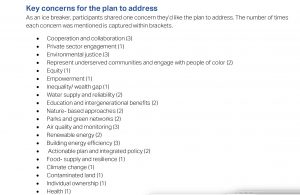
And yet, in those same City Staff presentations that highlighted poor air quality as a reason to have a Climate Plan, air quality itself was completely absent in the staff’s list of anticipated recommendations. It wasn’t that they just didn’t have much to say. They had nothing to say. There wasn’t even a category for air quality.
So Downwinders complained. Loudly. Staff and consultants sprang into action and came up with a category of recommendations officially called…“Other,” the theme of which was “air quality standards” and “public education.” Opportunities cited included “location-specific initiatives (e.g. downtown)” and “Programs targeted outdoor workers (e.g. Landscapers, construction workers).”
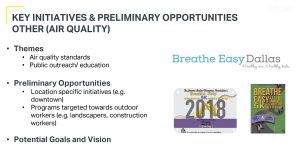 So sure, we have a chronic air pollution problem that warrants a $500,000 consultancy fee to construct a plan, but in that plan we’re only going to continue to inform people of that problem and maybe do some kind of vague thing relating to the poor souls who work outside (limit hours, hand-out free oxygen, help find new employment, or maybe free health check-ups? Doesn’t give a hint). By the way, only the public education part of that slide made it to last Monday. Construction workers and landscapers are still up a creek.
So sure, we have a chronic air pollution problem that warrants a $500,000 consultancy fee to construct a plan, but in that plan we’re only going to continue to inform people of that problem and maybe do some kind of vague thing relating to the poor souls who work outside (limit hours, hand-out free oxygen, help find new employment, or maybe free health check-ups? Doesn’t give a hint). By the way, only the public education part of that slide made it to last Monday. Construction workers and landscapers are still up a creek.
Along with those snippets of text on the “Other” slide were large color pictures of the “Breathe Easy” 5K run sponsored by The Jerome Alston Memorial Foundation in May…during Ozone Season. We’ll give the City staff credit. In terms of public education, there might not be a better way to personalize the seriousness of DFW’s air pollution problem than having North Texas smog cause an emergency asthma attack while you’re running in it. But liability could be an issue.
As late as the final round of public meetings last Fall, staff still didn’t have an “Air Quality” category but said they would have “something” when the plan was published.
Turns out “something” looks a lot like nothing.
Among the 93 “actions” listed in the Plan’s draft, the category of Solid Waste gets nine recommendations. Water Resources 15. Urban Ag 14. The brand new category of “Air Quality” has four – the fewest of any category in the plan. It’s practically stamping “Last-Minute Desperation” on the whole subject.
And tell us if any of these recommendations sound like anything you might have already heard about…
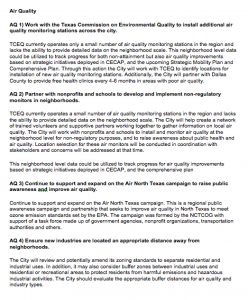
Let’s take them from the top.
The very first thing out of the gate, the lead-off, sexiest, out-of-the-box recommendation for improving air quality is…. somehow talk the State into adding more obsolete, state-run air monitors at some unspecified time in the future.
If you can, forget that the State environmental agency – the Texas Commission on Environmental Quality (TCEQ) – is a model for the Trump Administration. Forget that its official position is that smog is waaaaay overrated as a health threat. In other words, forget that this is akin to hiring Charlie Sheen to babysit your only child.
It’s not the baked-in, in-your-face cynicism of City staff knowing the state has every reason not to do this that’s so offensive. It’s the same cynicism applied to knowing full well what will happen even if the state says yes to the request: no real improvement in local information about air quality. Those state monitors are big, slow, and sparse. They run two hours or more behind real time. They’re hard to find online. They’re needlessly expensive and take up lots of real estate that has to be purchased. Their placement is decided by TCEQ and city staff, not the communities most in need of them. There is no stated OEQS goal for the number of monitors to acquire, or suggestions about where new monitors should be. No language in the recommendation about wanting real time monitoring or more modern equipment. It’s just an expansion of an already-obsolete system the state only runs because federal law requires them to (for now).
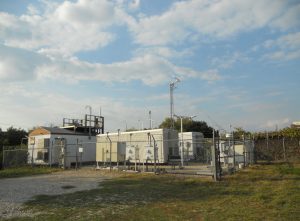
OEQS wants more of these lumbering and obsolete monitors from the state.
So let’s say the City talks the state into doubling the number of state PM 2.5 monitors in Dallas. Victory! The discussion will then be where to place the second slow, hard-to-find PM monitor for all of Dallas County’s 2.5 million residents.
Left unsaid in this recommendation is something we already know. For a year now Staff has tried to move that single Dallas County PM monitor located on Hinton Street north of Downtown to somewhere in Southern Dallas. Apparently the state has made that hard-to-impossible and so for the purposes of having something, anything, to recommend for this climate plan, staff recommends more monitors – knowing there’s a snowball chance in Hell of getting them. It’s the perfect bureaucratic out.
Most importantly the City remains a spectator to the reporting to its residents of how bad their air is. Its staff doesn’t have to make any environmental health judgments as they’re busy promoting tree planting. They leave that up to the people who couldn’t care less about how much pollution you’re breathing.
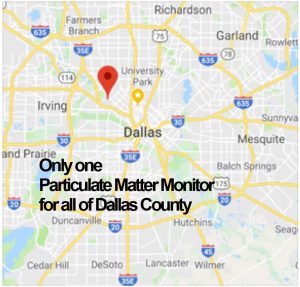
In the wake of recent Gulf Coast chemical plant accidents, the TCEQ is under heavy criticism for its lack of current air monitoring technology. The system it operates in DFW hasn’t changed in over 20 years. TCEQ won’t even put an air monitor in the only DFW “non-attainment” county that doesn’t have one – Wise – where smog levels have been predicted to be even higher than in DFW proper.
Recommending a modest expansion of circa-1999 technology is the opposite of a “best practices” answer for our gap in local air quality knowledge. The most alarming thing about this recommendation is that it got made at all.
The one-liner stapled at the end about offering free health screenings “with Dallas County” (who’s already in the business) in “areas with poor air quality” is incredibly condescending. Here’s the ultimate “settlement house” approach to a social ill – addressing the symptoms but not the cause. “Well, we can’t do much to enforce code or keep those batch plants out of your backyard, but by God we’ll be around every 6 months to keep track of your asthma until you die from it.”
How does OEQS staff know where those “areas with poor air quality” are now unless they’re out monitoring them? Which they clearly do not want to do. Given there’s only one official PM monitor for all of Dallas County, how are they defining “areas with bad air?” If they’re making educated guesses where those “areas” are based on other factors besides monitoring, why not name those factors and the “areas?” OEQS goes out of its way to avoid using the words “environmental justice” even as it makes recommendations based on the concept.
Recommendation #2 – let’s build our own “non-regulatory” air monitoring network sometime in the unspecified future with unspecified non-profits and community partner volunteers and put an unspecified number of monitors in unspecified places, for which we unspecified criteria. And these monitors “could be used to “to track progress for air quality improvements based on strategic initiatives deployed in CECAP, and the comprehensive plan.”
This is actually a great idea. It’s such a great idea that a specified alliance of local governments, non-profits, and community partners are already doing it in specified locations with specified monitors. Their effort is about to deploy over 100 locally-built air monitors that will increase PM 2.5 monitoring in Dallas County by 4000%. It’s called the SharedAirDFW Community Air Quality Monitoring Network and the City of Dallas officially walked out of it last year over a public participation requirement and a desire to refrain from being the source of bad news about bad air.
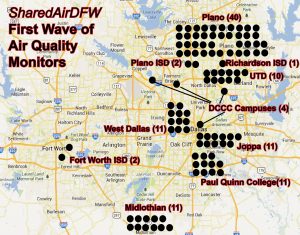
Dallas city staff is consistent in believing that telling you about air pollution is absolutely, positively necessary – they just want someone else to do it.
Having walked away from the SharedAirDFW network, OEQS set out to make one up of its own using the City Hall-friendly Nature Conservancy as its non-profit partner. The “Breath Easy” plan was to put 9-12 PM and smog monitors on the same number of DISD campuses, grow trees and implement anti-idling zones at those schools and see if asthma attacks/rates dropped in 24 months (2 growing cycles). Everyone seemed to agree how important a project this was and the city raised $500,000 or more to buy 12 very nice Aeroqual (Recommended by Downwinders since 2017!) air monitors. Everyone but the Dallas independent School District, who nixed the idea last summer. This detail somehow escaped the presentation staff gave to the City Council’s Quality of Life Committee on the Breath Easy project in September 2018.
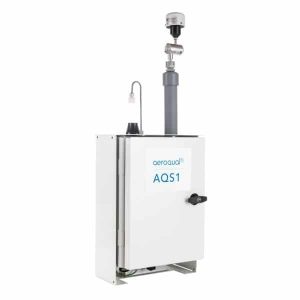
An Aeroqual stationary air monitor like the 12 Dallas owns…but isn’t using
So far the City of Dallas is 0 for 2 in making their own recommendation a reality when it had the chance. But wait! Remember those 12 monitors the City bought for the defunct Breathe Easy project? They’re just sitting somewhere. They’re already paid for but aren’t being used. OEQS could implement this recommendation of theirs on its own tomorrow if it wanted to by placing these 12 monitors in locations based on where the most industrial facilities are and where the most air pollution complaints come from. Overnight it could have its own fleet of “non-regulatory” monitors in the field, with all the benefits cited by staff.
But there’s no mention of those 12 monitors, or of the City Hall’s ability to accomplish this goal on its own, right now, without waiting. Because it doesn’t want to. It wants someone else to do it.
Recommendation #3 . It’s that forlorn public awareness recommendation showing up in the form of continued support for an ozone season air quality campaign run by a group that did its part to make smog an issue for years. There’s no harm to this but there’s also no help. This campaign will go on for as long as DFW is in violation of the Clean Air Act and doesn’t mention climate change.
Finally, there’s recommendation #4. Perhaps (but perhaps not) heavy industry that pollutes a lot shouldn’t be close to homes. This is coming straight-faced from a OEQS that’s approved the last four batch plants seeking permits to set-up shop in Joppa and the South Central Corridor…next to homes. Do as we recommend, not as we actually, you know, do.
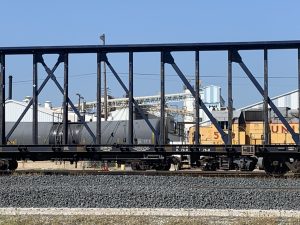
The TAMKO asphalt shingles plant and multiple diesel locomotives operate next to Austin’s asphalt batch plant…and residents in Joppa
When it says the City will review zoning, that’s not a special environmental health screening of sites. It’s just part of upcoming land use planning processes that will already be used to re-examine all zoning on a neighborhood-by-neighborhood level. They’re riding coat tails. The OEQS doesn’t make recommendations about suggested buffer zones, where those zones should be, or what criteria the city should use in pursuing buffer zones. And it doesn’t even say the City’s neighborhoods need any buffer zones between homes and industries at all, just that it may want to consider them at an unspecified time by an unspecified body for unspecified neighborhoods. Have we mentioned the staff at City Hall really really doesn’t like to deal with environmental health issues?
We get it. They had to have something or you’d be reading our criticism about the absence of ANY specific air quality recommendations, no matter how lame. And there are other items in other categories that will inevitably produce decreases in air pollution of all kinds – bus and vehicle fleet electrification being among the lowest-hanging fruit.
But City Hall’s cynical use of DFW’s air pollution problem to win support for a plan that ends up doing nothing about it directly makes these “Air Quality” recommendations particularly contemptuous.
What would more sincere “air quality” recommendations look like?
1. Acknowledging an historic imbalance in the air pollution burdens borne by Dallas neighborhoods and a commitment with a deadline to inventory the City’s air pollution threats by council district and zip code. You c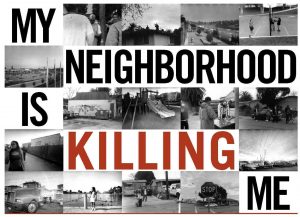 an’t fix what you don’t measure. Right now there’s no map of where concentrations of air pollution are in Dallas.
an’t fix what you don’t measure. Right now there’s no map of where concentrations of air pollution are in Dallas.
2. Acknowledging there’s no safe level of PM air pollution, i.e., no amount of exposure that isn’t capable of doing harm. Acknowledging People of Color are exposed to more, and higher levels of PM pollution than their white peers. These conclusions, supported by a multitude of good studies, including ones from EPA, are basic in prioritizing where to reduce air pollution in Dallas.
3. Recommendation to write an Environmental Equity Provision into City Code to discourage and prohibit siting new polluters in those zip codes hosting more permitted polluters than the citywide average, beginning in 2021.
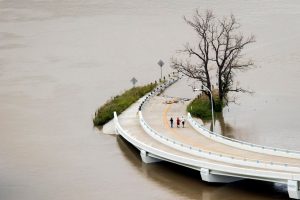 4. Recommendation to quit siting polluters in any floodplain beginning in 2021.
4. Recommendation to quit siting polluters in any floodplain beginning in 2021.
5. Recommend a 2025 deadline for the electrification of all railroad switch yard operations in Dallas.
6. Recommend 1500 foot buffer zones on either side of new major highways where homes, day care centers, and schools would be prohibited from locating. Applied to existing highways as uses within 1000 feet come up for new permits and zoning.

7. Recommend the immediate amortization and relocation of the GAF asphalt shingle factory in West Dallas and the TAMKO shingle factory in Joppa. These factories are among the City’s largest industrial polluters in Dallas, accounting for over 420 tons of air pollution in 2017 alone. They operate in the middle of dense urban residential areas populated primarily by People of Color. They need to be relocated elsewhere. Building new facilities will automatically trigger modern pollution controls requirements. They’ll be cleaner and doing business in a less harmful location.
8. Recommendation to rewrite city codes giving incentives for cleaner industries and more requirements for dirty ones.
9. Join UTD’s SharedAirDFW Community Air Monitoring Network – plug OEQS’ 12 unused monitors into the Network and begin to take responsibility for telling Dallas residents what their air quality actually is.
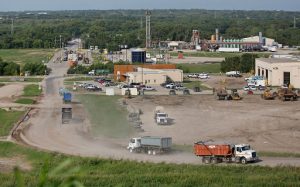 10. Acknowledge the conflict of interest the City has in producing and selling gas from its landfill recovery operation and commit to electrification of all city-owned vehicles by 2025. Dallas’ own city-run McCommas Bluff methane gas recovery facility is the fourth largest air polluter in Dallas, releasing over 160 tons of air pollution in 2017 alone. Recommend contracting only with electric vehicle fleets for additional services. Los Angeles recently committed to an all electric garbage truck fleet in five years, and Dallas could do the same – but it still wants to use its own landfill gas to power combustion vehicles.
10. Acknowledge the conflict of interest the City has in producing and selling gas from its landfill recovery operation and commit to electrification of all city-owned vehicles by 2025. Dallas’ own city-run McCommas Bluff methane gas recovery facility is the fourth largest air polluter in Dallas, releasing over 160 tons of air pollution in 2017 alone. Recommend contracting only with electric vehicle fleets for additional services. Los Angeles recently committed to an all electric garbage truck fleet in five years, and Dallas could do the same – but it still wants to use its own landfill gas to power combustion vehicles.
11. Implement stronger enforcement of the city air quality and nuisance ordinances, including hiring new staff and publicizing how to request an investigation.
12. Beginning in 2025 begin collecting municipal clean air mitigation fees of $50 a pound on permitted air pollution from major sources to incentivize pollution controls and pay for new staff. In 2017 such a fee would have collected over $1 million.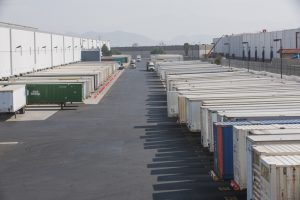
13. Implement no idling zones in all Dallas warehouse districts.
14. Recommend Low-Emission Zones in Downtown Dallas where combustion vehicles are banned or restricted, permanently or on a schedule. Consider expanding to other parts of Dallas such as Deep Ellum and Bishop Arts where congestion is already a problem.
15. Recommend PM pollution protection be designed into new bus shelters.
16. Recommend establishment of an Electric Bus Procurement Pool with DISD, DART, Trinity Metro, other area schools districts, and transit companies for cheaper purchases of electric buses.
17. Restoration of t he Dallas Environmental Health Commission.
he Dallas Environmental Health Commission.
18. Hiring a City of Dallas Environmental Health Scientist.
DFW does have a chronic bad air problem. The Climate Crisis will make it worse. It is a legitimate area of policy planning in any thoughtful, modern Climate Plan.
Just not this one.

